INFRASTRUCTURE IMPROVEMENT PLAN
Adopted 15 December 2022
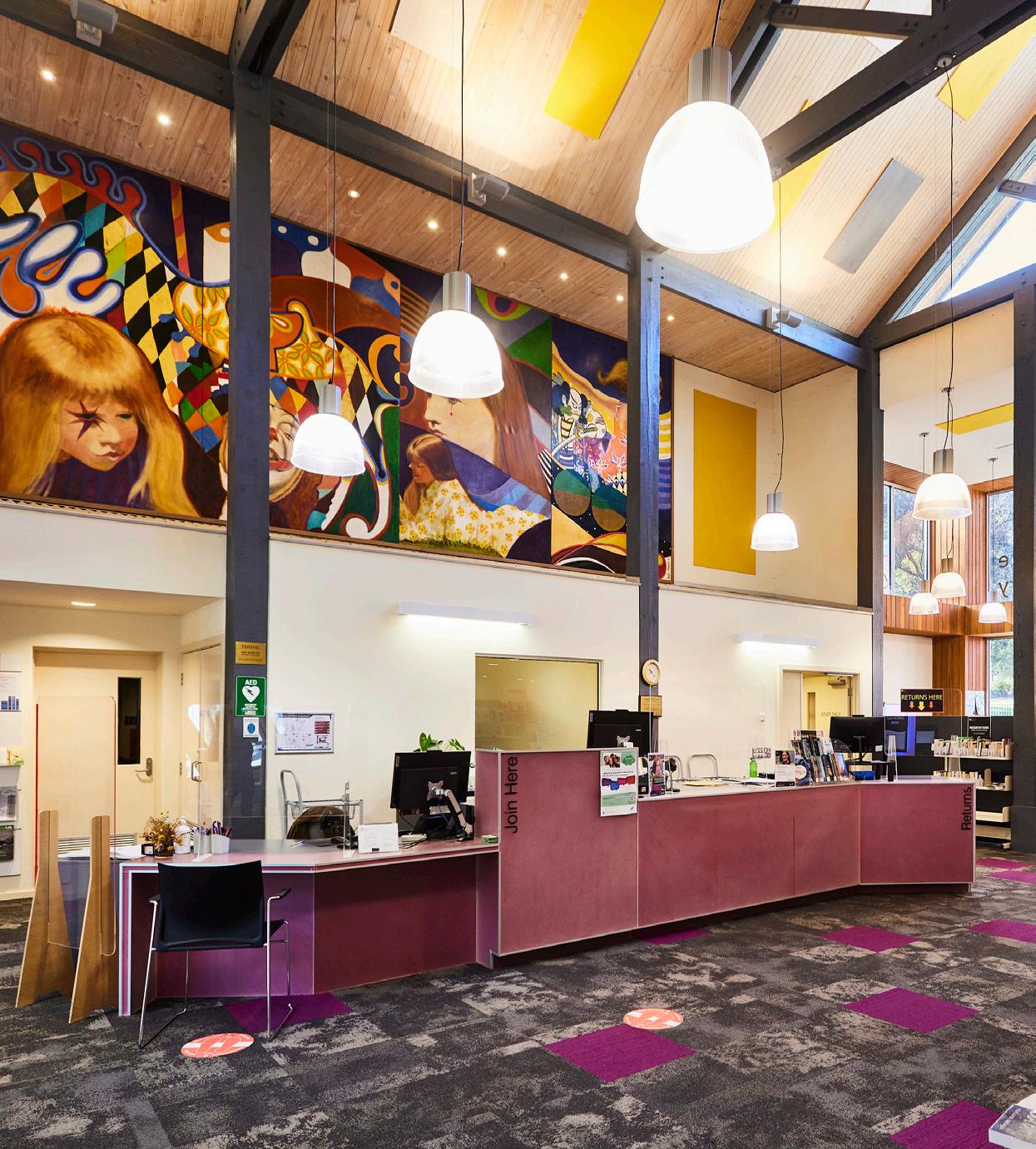
Acknowledgement of Country
Whitehorse Manningham Libraries acknowledges the Wurrundjeri Woi Wurrung people of the Kulin Nation as the traditional owners of the land on which our libraries are located. We pay our respects to their Elders past, present and emerging.
Acknowledgments
This plan was developed with input from representatives across the Whitehorse Manningham Libraries, the Cities of Whitehorse and Manningham and the Board of the Whitehorse Manningham Regional Library Corporation.
The plan was researched and written by Sue Howard, Sue Howard Management and Consulting Services.
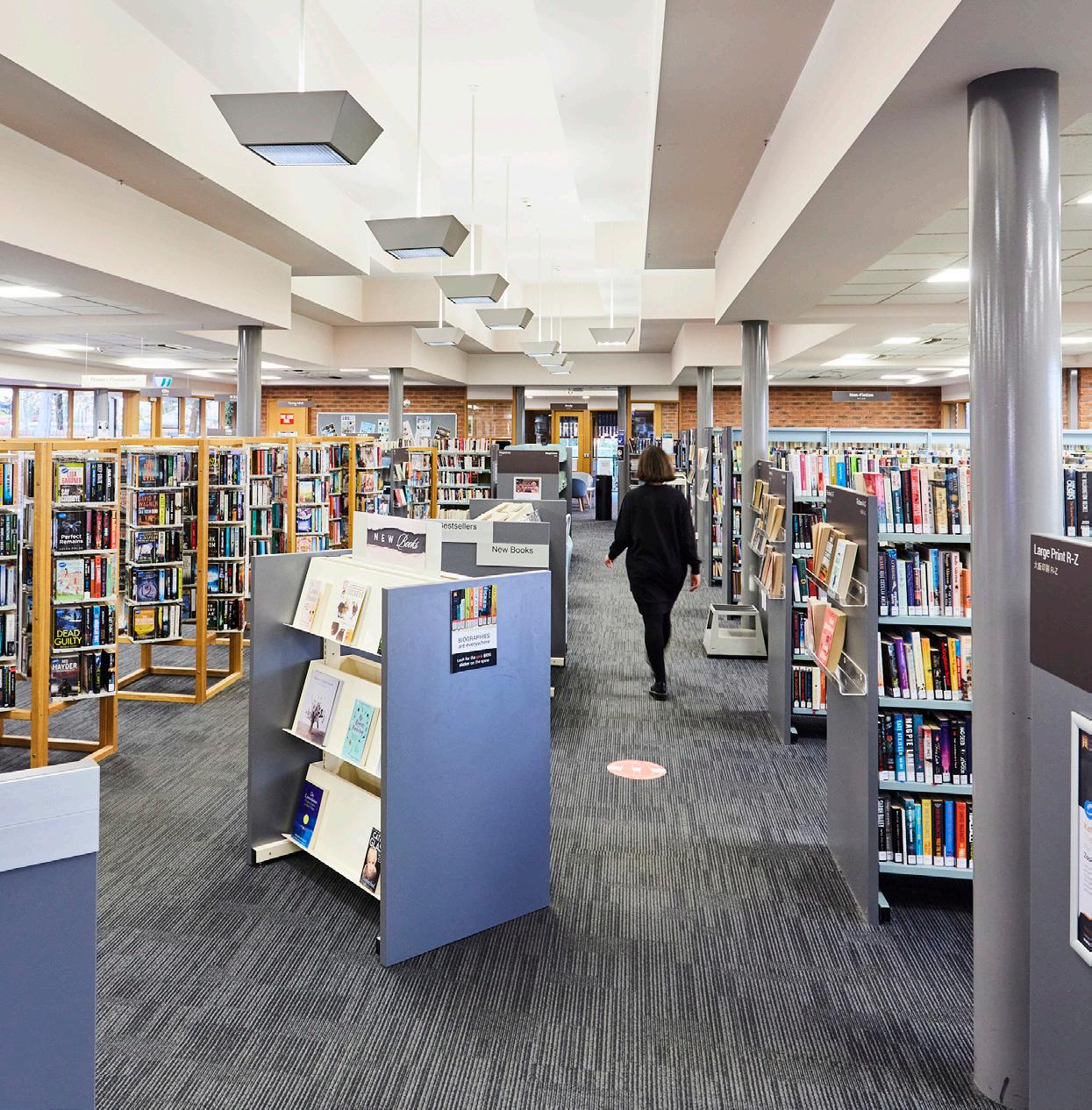
Part 1 Background And
Part 2 Drivers Of
Part
Part 5 Six Exemplary Modern Libraries
8 9 10 13 13 14 14 16 17 18 19 20 24 24 25 25 25 26 28 30 32 33 33 34 36 38 40 58 58 59 60 62 69 70
Table of Contents
Context The importance of Public Libraries Aim of the Infrastructure Improvement Plan (IIP) Developing the Infrastructure Improvement Plan Overview of the Whitehorse Manningham Library Network A Shared Service Approach Strategic Context of Public Library Provision The Whitehorse Manningham Library Plan 2021-2025 WML Service Plans
Change Impact of new technology Population and demographic changes Library buildings as community and work spaces Strategic Risk Libraries contributing to Health and Wellbeing Responding to the COVID-19 Pandemic The Condition of Whitehorse Manningham Libraries What Library users say about WML
Services A Service Point Model Library Standards Australian Public Libraries Guidelines and Standards People Places. A guide for planning public library buildings
3 Contemporary Library
The Infrastructure Improvement Plan Guiding Principles for Library Improvement and Development Library branches and distribution Library Assessments - current state and future vision Improving Whitehorse Manningham Libraries The Approach Summary of Library Improvement Projects Conclusion
Part 4
References Appendix 1 Library Activity Statistics 4 7
Summary Introduction
Executive
Executive Summary
Public libraries are worth investing in. Every day libraries help people to read, learn, discover, relax and connect. Libraries deliver benefits to not just the individuals that use them but to the community as a whole. For many who live, work and study in Whitehorse and Manningham, libraries are an integral and highly valued part of their life and their community. Libraries provide free, safe and welcoming spaces for all people. They build community capacity by helping individuals to improve their knowledge and skills or change attitudes and behaviours, and to access information and increase awareness of what is happening in their community.
Libraries also have a positive impact on community wellbeing, economic and cultural outcomes. The Libraries Work! The socioeconomic value of public libraries report by SGS Economics found that every dollar invested in Victorian public libraries generates $4.30 of benefits to the local community, demonstrating that public libraries are a high return on investment proposition.
Whitehorse Manningham Libraries (WML) delivers services through 8 library locations along with a range of outreach and digital services. WML experience a high level of annual activity with:

Loans of collection items
3.1 million Visits to the libraries
1.3 million Library members
103,961 Public computer & Wi-Fi sessions
836,953 Attendances at library programs, events & activities
81,581
4
Public library services have changed dramatically over the last two decades. New technology has revolutionised lending processes and collection management. More of the collection is available in digital formats and children and adult programming has become more diverse and popular. Public access computers and free WML Wi-Fi has increased demand for study, work and table space and communities have changed and grown too. These things all impact on library buildings and infrastructure. Library buildings need to accommodate and support these new ways of delivering library services. Libraries can be large “Flagship” libraries providing services on a regional level or smaller “boutique” libraries with collections and services tailored to neighbourhood needs. Library buildings co-located with complementary community, cultural and education services can also bring a range of mutual benefits.
The aim of the Infrastructure Improvement Plan is to support the planning of functional, flexible and inclusive physical library spaces that improve access to library services and deliver greater benefit to the Whitehorse and Manningham communities.
A high level review of Whitehorse Manningham library infrastructure in 2021 by I & J Management revealed that; “library infrastructure in both Councils is in need of additional investment to modernise facilities and improve the library experience for the community both now and into the future.” The authors found that the age, condition and size of the majority of libraries across the region to be significantly below contemporary standards, inhibiting the provision of responsive library services.
To understand the strategic context in which the libraries operate, consideration was given to the WML 2021-2025 Library Plan, and other strategic service and infrastructure reviews undertaken by WML as part of long term planning for library services. Council Plans and relevant strategies have been studied to assess how libraries are being positioned to serve and deliver on Council objectives.
A more detailed examination of library buildings, and interviews with library service managers and WML Board members was undertaken to understand the specific impacts of library infrastructure on services and community use. Demographic data looking at growth and changes in population was analysed to understand the different characteristics of communities around WML.
Improvement opportunities exist for all libraries as most libraries in the network have not been upgraded in the last decade. For each library, a vision for the service has been proposed in line with contemporary library standards and community use and need.
Part 5 of the IIP includes an overview of six exemplary libraries that form part of community, civic or cultural hubs, demonstrating how new library developments are contributing to communities.
In summary the WML Infrastructure Improvement Plan:
� identifies of the role and community benefit of contemporary public library infrastructure;
� identifies the strategic context within which WML operates;
� provides an assessment of existing Whitehorse and Manningham library infrastructure and its capacity to support the delivery of the desired community outcomes;
� provides a high-level vision for renewed library infrastructure across the two municipalities;
� outlines the key actions needed to deliver improved library facilities;
� proposes a set of guiding principles for library development; and
� showcases examples of exemplary contemporary public library buildings.
5
We all love our library - each of us using it in a slightly different way. It is one of the few community services we use and we treasure it. Thank you!
Library Survey Respondent
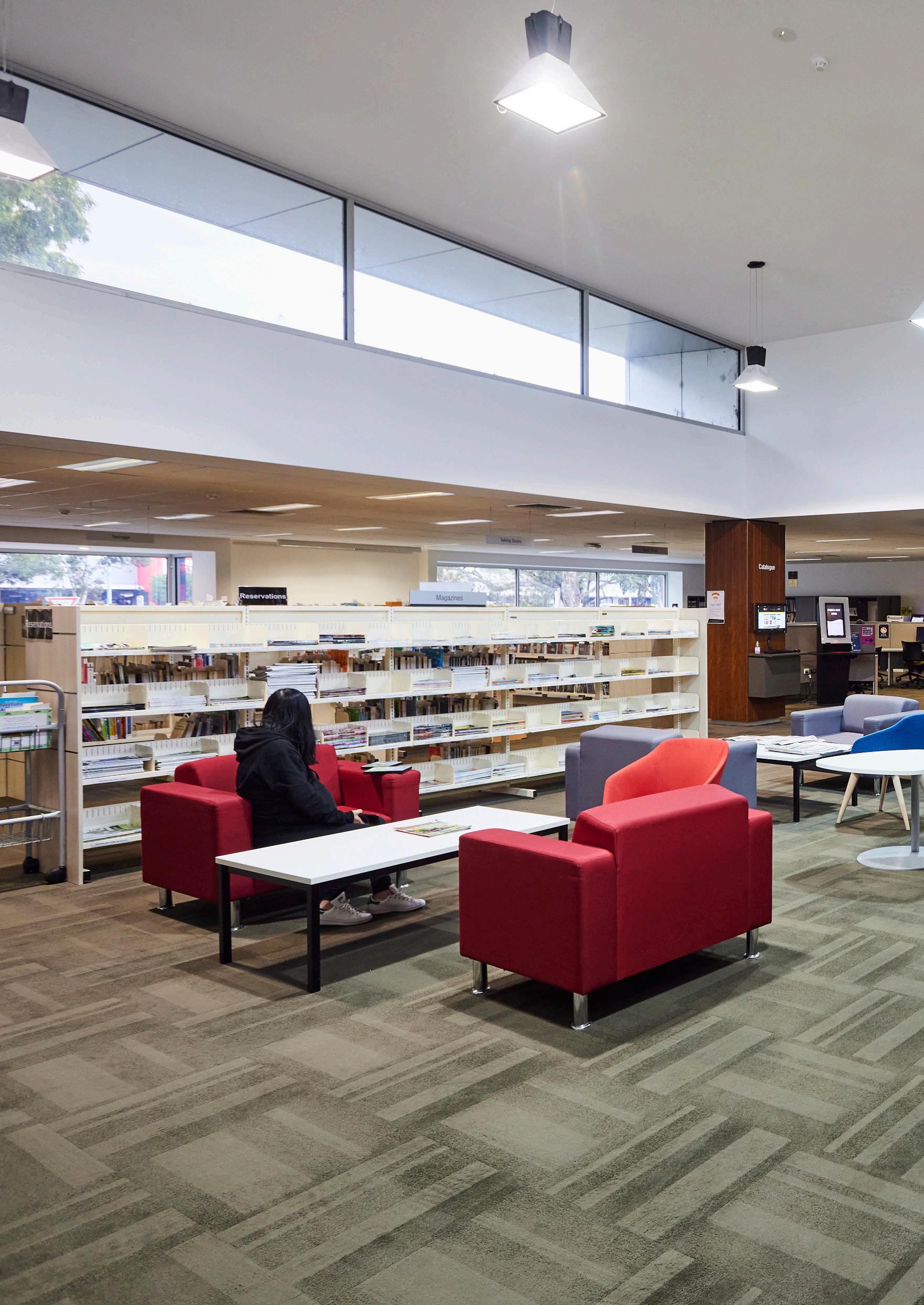
6
Introduction
The Whitehorse Manningham Regional Library Corporation (WML) provides a region wide shared library service to the City of Whitehorse and the Manningham City Council. The Library Corporation was established in 1995 and delivers a service through eight library buildings across the two municipal areas. WML also provides a home library service, and a website that offers access to eCollections and a range of virtual, on-line services and programs to the whole community.
The preparation the WML Library Infrastructure Improvement Plan (IIP) supports the achievement of the WML 2021- 2025 Library Plan. The Library Plan says that to be an inclusive and welcoming people-centred library service, a plan for physical infrastructure renewal and improvements, developed in collaboration with member Councils, is needed. Contemporary library services require buildings that respond to new ways of operating and the needs of library users. The aim of the IIP is to provide a rationale for change and describe a vision for the way forward.

7
PART 1 BACKGROUND AND CONTEXT
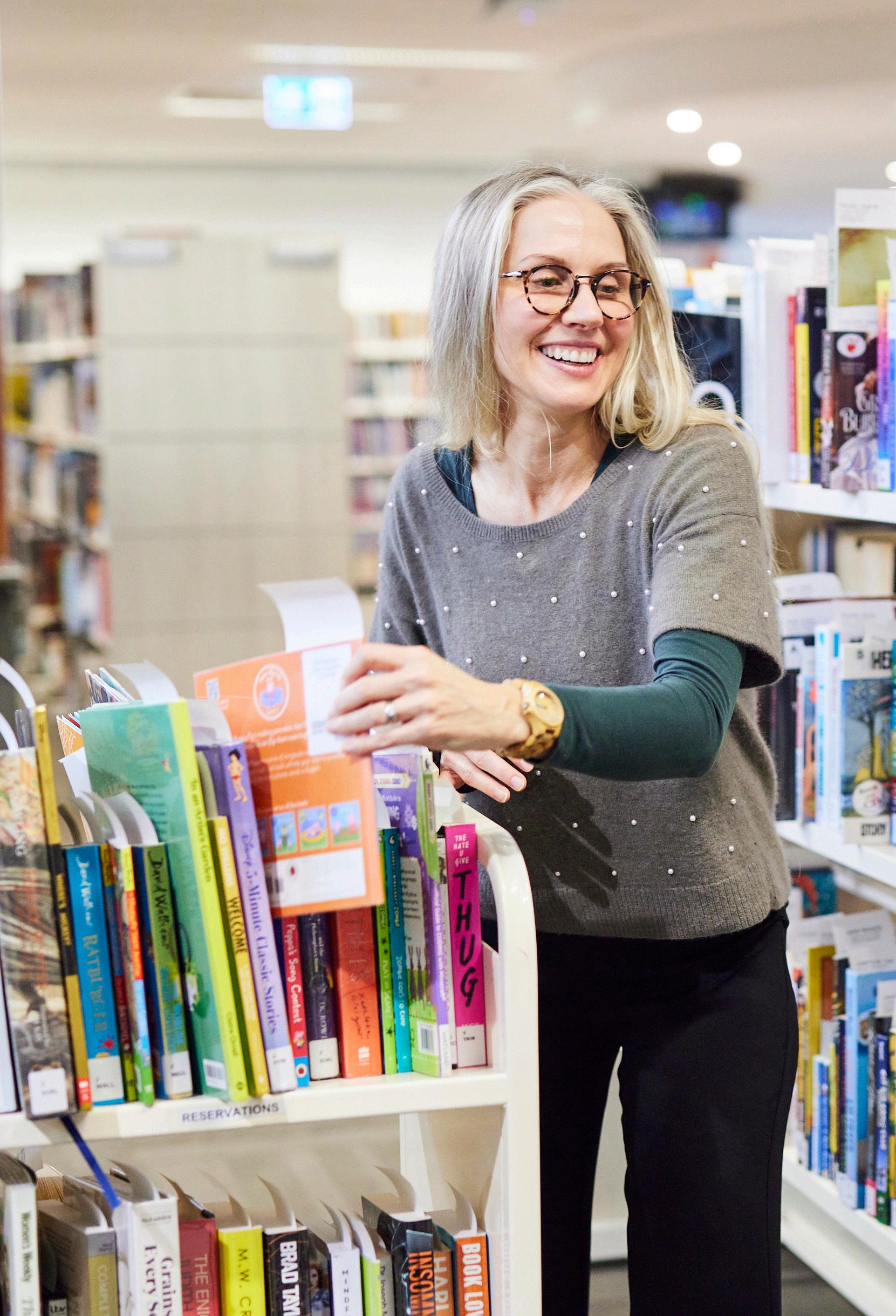
8
The Importance of Public Libraries
Public libraries house valued services for local communities. They are safe and trusted places where all people are welcome, regardless of their age, background or circumstances. The Standards and Guidelines for Australian Public Libraries, May 2021, identifies six broad individual and community outcomes from the provision and use of public library services1
i. Literacy and lifelong learning
Public libraries play a vital role in helping children learn to read through Early Years literacy programs and collections that encourage parents and caregivers to read to their children at home. Libraries also offer programs and resources to support adult literacy as well as collections, programs and facilities that enable and encourage people of all ages, backgrounds and interests to pursue formal and informal study and lifelong learning.
ii. Digital inclusion
The ability to access and use technology is fundamental to meaningful engagement in society. Increasingly the only way to access some information, government and other services is through the Internet. Libraries play an important role in supporting digital inclusion by providing free access to computers, the Internet and other digital technology, technical support and digital literacy training.
iii. Personal development and wellbeing
Public libraries are open for everyone in the community to use in a way that supports their personal development and well-being, be this reading for pleasure, meeting friends and people with common interests, accessing information that supports health and wellbeing, managing their personal finances or being somewhere safe, be around other people, study, work or relax in a welcoming environment, or be warm on a cold day or cool on a hot day.
iv. Stronger and more creative communities
Public libraries strengthen communities and build social capital by providing an inclusive forum and support for expression of creativity and cultural identity. They preserve the past, celebrate the present and embrace the future by ensuring free and equitable access for all people, collecting and promoting local cultural content, providing access to communityfocused content and collections and celebrating diversity and promoting acceptance, tolerance and understanding.
v. Informed and connected citizenship
Public libraries are places where people come together to connect with one another and what is happening in their community. At the library people can learn about the community, local news and current events, meet to discuss, share and exchange ideas and learn about laws, regulations and the democratic process. Libraries are non-commercial spaces often colocated with other community focused services and organisations.
vi. Economic and workforce development
Public libraries support economic and workforce development by providing access to computers and the Internet to search and apply for jobs online. Libraries provide programs to assist people to write job applications and develop job ready skills. Libraries are increasingly providing spaces where start-ups and small businesses can work, access business information and support or collaborate. As focal points in the community, libraries contribute to local economies by attracting visitors.
9
1 Standards and Guidelines for Australian Public Libraries. May 2021. Australian Public Library Alliance and Australian Library and Information Association.
It has been shown that people that don’t use libraries still place a value on public library services, knowing they can use these services in the future and that public libraries are available for other members of the community. It has also been demonstrated that every dollar invested in Victorian public libraries generates $4.30 of benefits to the local community, so it’s a high return on investment proposition.2 Many new libraries also model sustainability through facility resource sharing and energy efficiency.
The Future Public Libraries Survey, 2022, commissioned by the State Library of Victoria with Public Libraries Victoria, analysed the results of 1,255 surveys undertaken in eight library services in metropolitan and regional Victoria. Library users were asked to rate the importance of future public library priorities. While the No. 1 priority is to be a lending service, libraries are also seen to play an important role in a number of other areas. The top 7 future priorities were:
� Providing access to books, magazines, DVDs and other resources (average score 4.4 out of 5)
� Assisting with children’s literacy and education (4.0)
� Providing access to educational resources and support (3.9)
� Supporting my mental health and wellbeing (3.7)
� Connecting with my community (3.7)
� Providing somewhere to just be (3.7)
� Providing access to computers and Wi-Fi (3.7).3
Great library buildings bring disparate groups together through flexible building designs that incorporate space to browse, participate, relax, gather, study, work and connect.
Aim of the Infrastructure Improvement Plan (IIP)
The aim of the IIP is to support the strategic planning of functional, flexible and inclusive physical library spaces that will enable greater benefit to the populations of Whitehorse and Manningham into the future. The IIP provides a framework for the development and renewal of library buildings informed by library sector standards and best practice and Guiding Principles.
The IIP identifies priorities for action and time frames, based on an objective assessment of the condition of the facilities, the needs of the community and population change. The IIP can assist WML and Councils, to advocate for the resources needed to provide library buildings that support modern library services that will fulfil community needs and expectations.
10
2 Libraries Work! The Socio-Economic Value of Public Libraries to Victorians. State Library of Victoria, 2018 3 The Future Public Libraries Survey, Summary Report, 2022. I and J Management for the State Library of Victoria with Public Libraries Victoria, pg. 4
I am single and I live in a boarding house. The library is a place for me to go when I need to get out.
Future Public Libraries survey WML respondent
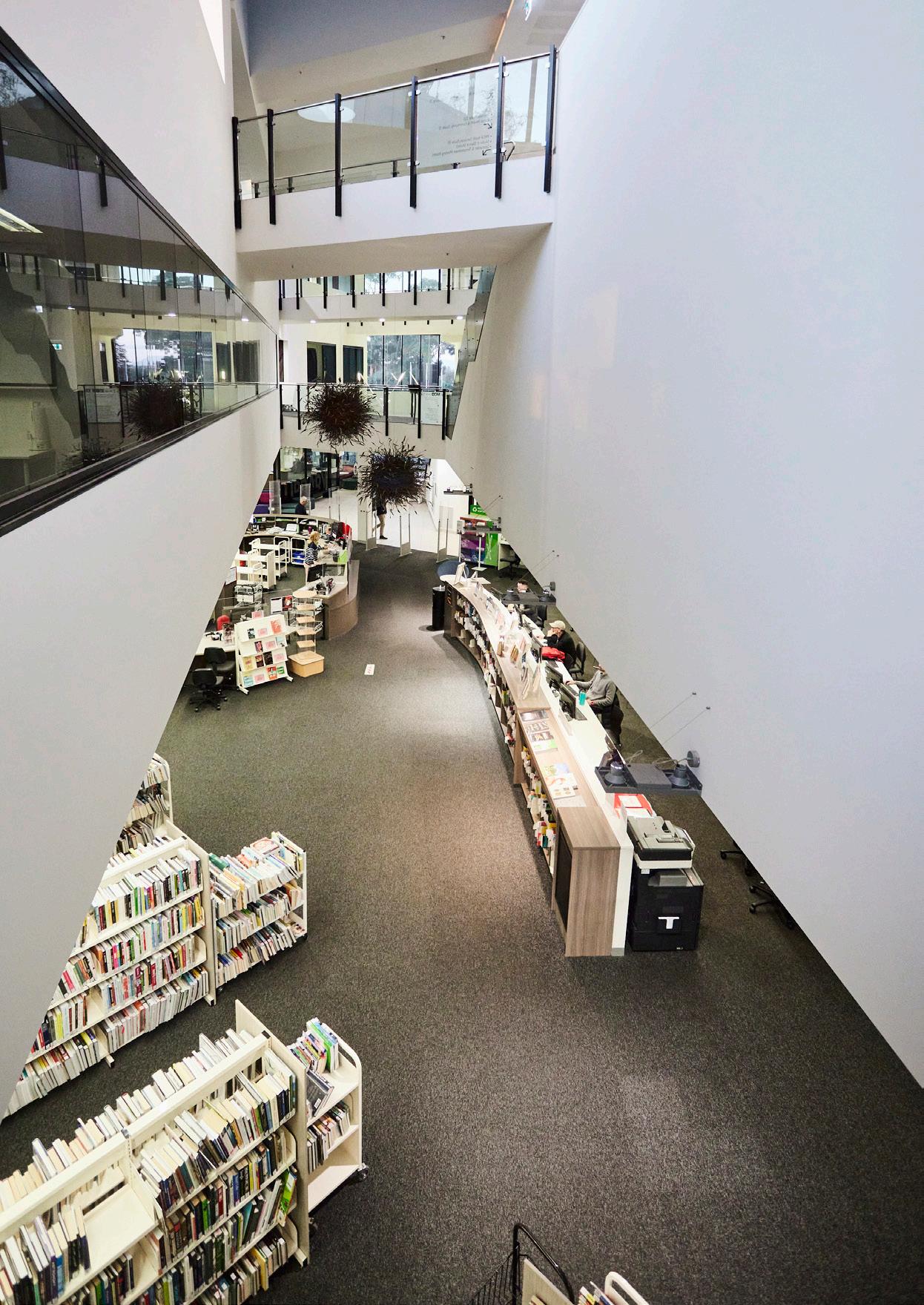

Developing the Infrastructure Improvement Plan Overview of the Whitehorse Manningham Library Network
Visual inspections of library buildings were undertaken and interviews with library managers, service managers, the Chair of the WML Board and the Council Directors on the WML Board were conducted. Library data relating to visitation and service usage (see Appendix 1 for more detail) was analysed along with comments in Library User Surveys in relation to library facilities. The impacts of the COVID-19 Pandemic on library usage was also explored.
Consideration was given to the WML Library Plan 2021-2025, and other strategic service and infrastructure reviews undertaken by WML as part of long term planning for library services. Council Plans and relevant strategies have been reviewed to assess how libraries are being positioned to serve and deliver on Councils’ strategic objectives.
Demographic data looking at growth and changes in population was analysed and improvement opportunities have been identified in line with contemporary library standards and guidelines.
The Whitehorse Manningham Libraries cover an area of 178 sq km in metropolitan Melbourne with a population of 309,664 (2021 Census). There are eight libraries, four in the City of Manningham; Doncaster, The Pines, Bulleen and Warrandyte, and four in the City of Whitehorse; Box Hill, Nunawading, Vermont South and Blackburn. WML delivers services onsite through physical libraries, online through the digital tools and downloadable digital resources, and offsite through outreach activities, pop-up facilities and home library services.
Each of the eight libraries is different in age, size and condition. In Whitehorse all libraries are housed in Council owned assets. In Manningham, two libraries are located in Council owned and managed community hubs, and two are located in spaces leased by Council in shopping centres.
Note * WML Regional Support Services are located at the Box Hill and the Nunawading Libraries
13
Library Built Last refurbished Gross floor area m2 Building ownership status Location MANNINGHAM Doncaster 2012 1,600 Council Asset Community Hub The Pines 1987 1994 640 Space Leased by Council Shopping Centre Bulleen 1984 500 Space Leased by Council Shopping Centre Warrandyte 2013 293 Council Asset Community Hub Total m2 3,033 WHITEHORSE Box Hill* 1973 2018 1,800 Council Asset Stand alone Nunawading* 1976 2011 1,770 Council Asset Co-located with Civic Centre Vermont South 1990 864 Council Asset Stand alone Blackburn 1966 2000 350 Council Asset Stand alone Total m2 4,784
A Shared Service Approach Strategic Context of Public Library Provision
The region has a history of shared library services that predates the establishment of the Whitehorse Manningham Regional Library Corporation in 1995. WML emerged from the amalgamation of the Box Hill-Doncaster Regional Library and the Nunawading Library Service, and it now delivers public library services to Whitehorse and Manningham Councils under a Regional Library Agreement. The Agreement is in accordance with Section 196 of the Victorian Local Government Act 1989.
WML has worked closely with Whitehorse and Manningham Councils in the development and renewal of library buildings since establishment. With knowledge and expertise gained through the operation of libraries, WML has regularly identified building renewal needs to respond to changes in library service delivery.
Approximately 81% of funding for WML comes from member Councils, 17% of funding comes from a State Government grant and 2% of income is generated through user charges, small grants and other income. The Regional Library Agreement identifies the responsibilities of the Councils and the Regional Library Corporation. The following table illustrates at a high level where responsibilities lie.
Public library provision is informed by policy and plans developed at different levels of government.
The Manningham and Whitehorse City Councils Health and Wellbeing Plans and Council Plans describe intentions to address, amongst other things, diversity and inclusion, community connections, innovation and creativity, resilience, employment, education, skill development and health and wellbeing. Libraries have a role and the capacity to enhance outcomes in all of these areas.
Libraries are identified as important pieces of community and cultural infrastructure in State legislation, plans and policy documents. Regional Library Corporations are covered under the Victorian Local Government Act. Plan Melbourne’s The 20-minute Neighbourhood is a principle to be applied broadly and seeks to provide people with the ability to meet most of their daily needs within a 20-minute walk from home. Plan Melbourne also designates locations like Box Hill and Doncaster Hill as Metropolitan/Regional Activity Centres calling upon the provision of community infrastructure like libraries as part of Activity Centre development.
14
WML Shared Responsibilities Council
Plan and deliver library services Plan and deliver improved library spaces and services. Contribute annually to regional library operating costs.
Manage operating budget Plan and deliver on Council and WML goals through library resources. Provide and maintain library buildings. Maintain and replace WML assets.
4 The new Local Government Act 2020 requires Councils to transition their regional library agreements to an alternative shared service or beneficial enterprise arrangement by 2031. WML will continue to operate under the existing Regional Library Agreement until the member Councils determine the future governance model. The renewal of library buildings remains critical irrespective of the governance model.
The United Nations Transforming Our World: the 2030 Agenda for Sustainable Development, is an integrated framework of 17 Sustainable Development Goals (SDGs) spanning economic, environmental and social development. By fulfilling this Agenda, it is proposed that no one will be left behind. Library services are embracing the Sustainable Development challenge and WML has identified a number of ways it can contribute to SDGs, particularly around Good Health and Wellbeing, Gender Equality, Quality Education, Sustainable Cities and Communities and Reduced Inequality.
The IFLA – UNESCO Public Library Manifesto 2022 continues to be internationally recognised as a clear statement of the fundamental principles of the public library service. It states:
The public library, the local gateway to knowledge, provides a basic condition for lifelong learning, independent decisionmaking and cultural development of the individual and social groups. It underpins healthy knowledge societies through providing access to and enabling the creation and sharing of knowledge of all sorts, including scientific and local knowledge without commercial, technological or legal barriers5.
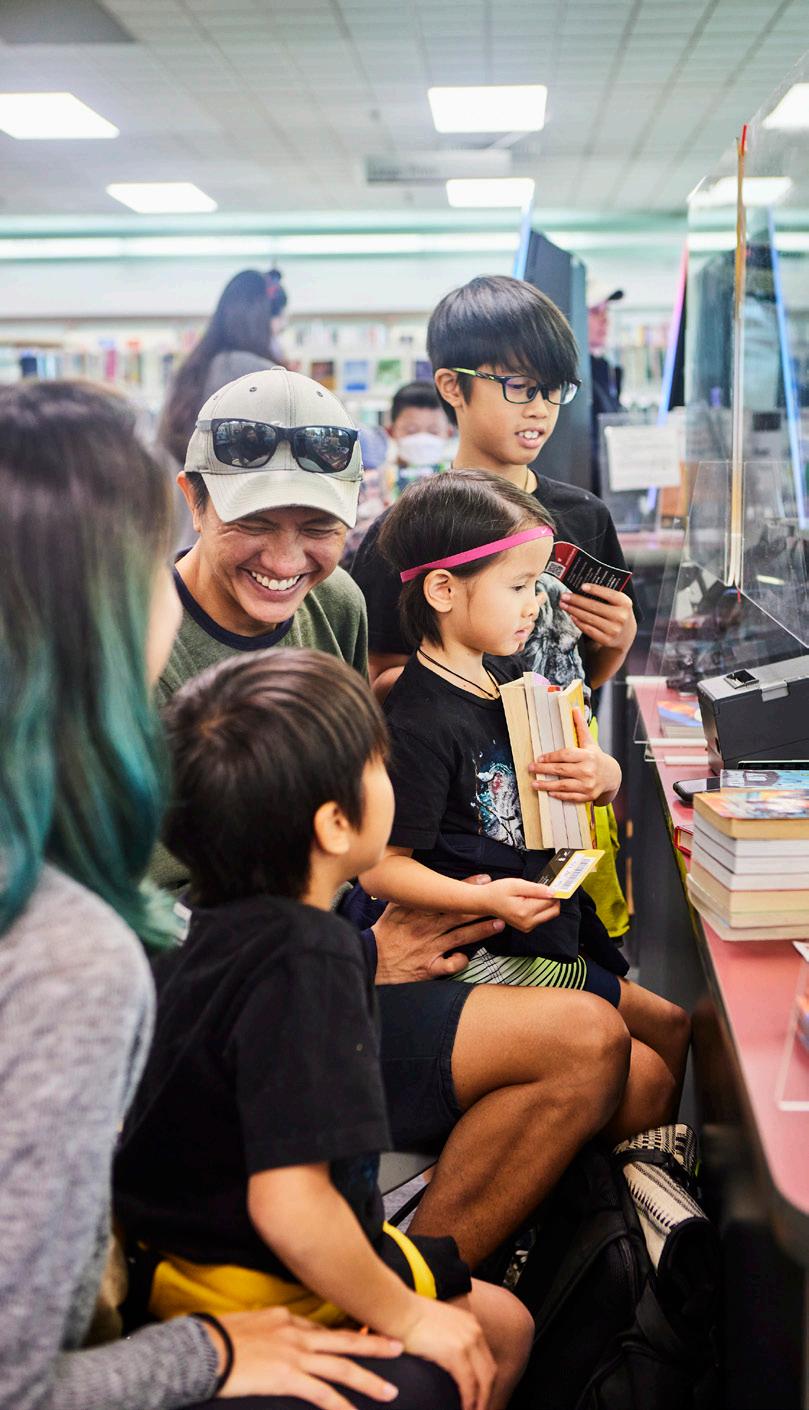
15
The libraries are very essential and necessary part of our community. They have saved a lot of money for my family and encouraged my kids to read more.
5 IFLA – UNESCO Public Library Manifesto 2022. International Federation of Library Associations and Institutions and UNESCO
The following diagram summarises and illustrates strategic context in which the IIP exists.
Local Government
WML
National/ International
• UN Sustainable Development Goals
• IFLA UNESCO Public Library Manifesto
State Government
• Local Government Act
• Plan Melbourne 2017-2050.Activity Centres and 20 min neighborhood
• Council Plan
• Liveable City Strategies
• Health and Well Being Plans
• Asset Plans
• Activity Centre Plans
• Positive Ageing Strategies
• Community capacity building initiatives
• Regional Library Agreement
• Library Board
• Library Plan 20212025
• Library Strategies and plans
• Library Sector Plans, Strategies and Guidelines
Properly realised library improvements can assist Councils to achieve many of their goals and objectives.
The Whitehorse Manningham Library Plan 2021-2025
WML’s Vision is to be “A vibrant and inclusive library service that enriches our community”. The Library Plan 2021 -2025 identifies four key strategic goals that shape WML’s approach to planning and delivery of best practice library services.
Goal 1: Experience
Objective: To be an inclusive and welcoming people centred service.
Goal 2: Learning and engagement
Objective: To enable an informed and engaged community.
Goal 3: Collaboration
Objective: To extend the reach and benefit of library services.
Goal 4: Performance
Objective: To be a flexible, resilient and high performing organisation.
This IIP supports the achievement of Goal 1: Experience, and responds specially to priority actions:
1.1 Provide inclusive, safe and accessible services for all, and
1.4 Plan for places and spaces that support the delivery of contemporary library services.
16
WML Service Plans
The delivery of the Library Plan is supported by a number of service plans and strategies. Key functions are described, with objectives and service standards outlined. These plans guide the delivery of the library service, help monitor performance and drive improvements. The
development of an IIP is an acknowledgement that the size, features and condition of library buildings impacts on service delivery and users. The IIP will sit alongside other plans to guide improvements in the library service and customer experiences.
17
Customer Service Charter Service Delivery Plans
Infrastructure Plan
Marketing Strategy
ICT Strategy
People & Skills Plan
Collection Development Plan
Library Plan Vision & Strategic Goals
PART 2
DRIVERS OF CHANGE
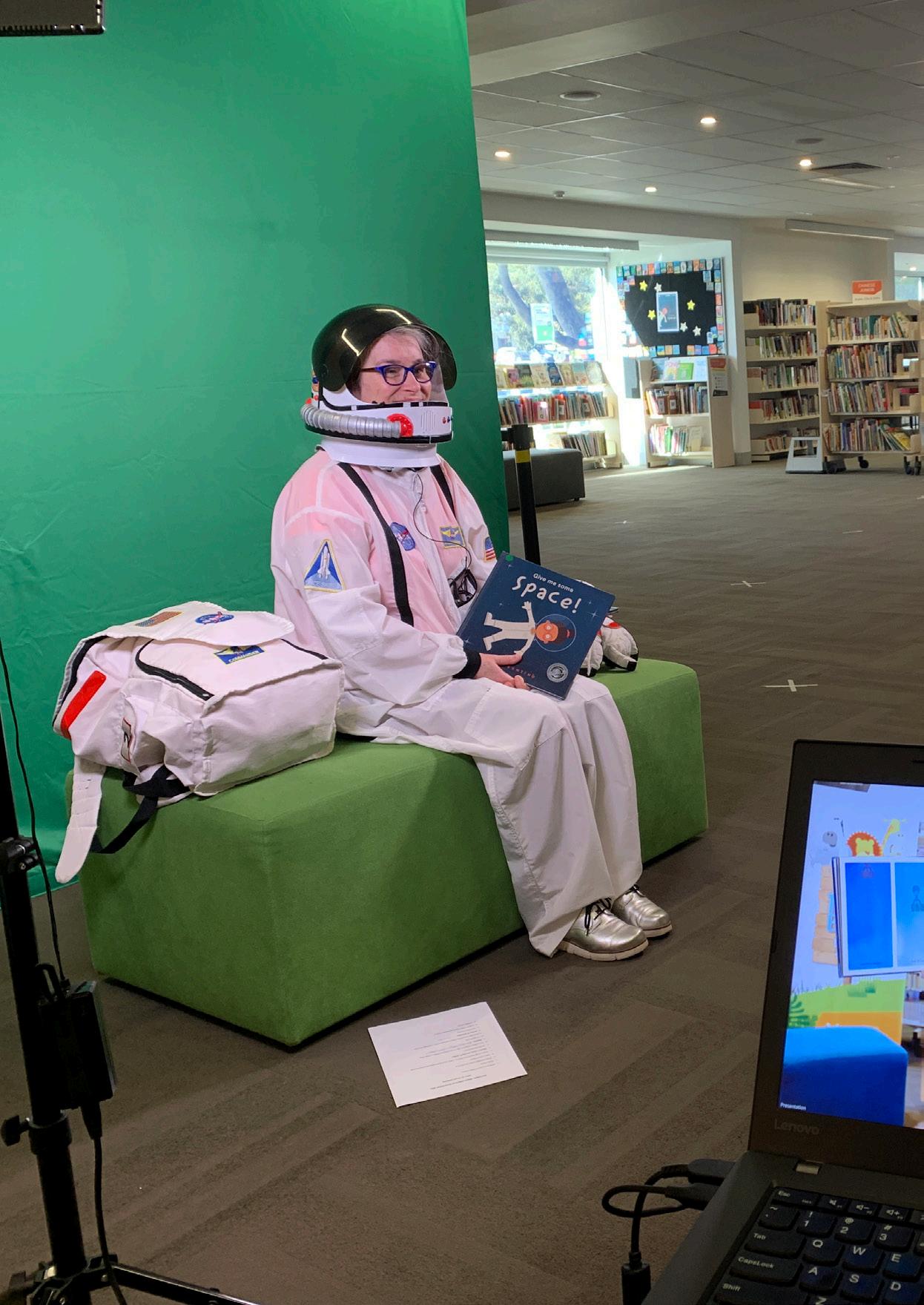
18
Impact of New Technology

In the early 2000s, as more information shifted online, futurists predicted the death of libraries. The threat of obsolescence made libraries rethink ways to remain relevant in a digital world, and how to ensure services they have always offered – universal access to information – could be rearranged into new formats. Collections were digitised and networked catalogues expanded exponentially the range of materials users could access.
New technology like RFID revolutionised lending processes. It has made large service desks obsolete, and impacted on the design and location of book return spaces. It increased the autonomy of users, freeing up library staff to deliver value added services. More items are available digitally i.e., books, audio materials and videos provided greater access to library collections and resources.
Adult and children’s programming has become more diverse and responsive to community needs placing more demand on programmable floor space. Screens have been mounted on walls to market services, play video games and watch digital content. Public access computers have been installed and free access to the Internet provided to help bridge the digital divide. The demand for desk and study spaces continues to increase as students do more and more of their learning online.
19
6
Population and Demographic Changes
The population has grown significantly in both LGAs since most libraries were built. In 2021 the population of Manningham was 125,827 and grew by 7.3% between 2016 and 2021.6 Since the last library was built in Whitehorse (Vermont South in 1990) the population has increased from 145,000 to 171,167 (and was 176,620 in 2020). An additional 25-30,000 people7. Housing density has increased and will continue to increase, and will fuel demand for access to alternative study, work, meeting and social spaces.
While future population growth is anticipated in the City of Manningham, the increase in population numbers is relatively low compared with Greater Melbourne. Doncaster Hill will experience the greatest population growth in the next 10 years (4,252 people, +77%), although this comes from a low population base8
8
20 Forecast population by suburb 2021 ‘000 2031 ‘000 Change 2021 to 2031 Population % Doncaster Hill 5.5 9.8 4,252 77% Doncaster Balance 22.0 25.5 3,366 15% Doncaster East 33.1 34.9 1,723 5% Bulleen 12.5 13.6 1,074 9% Templestowe 17.4 17.9 501 3% Donvale 13.8 14.3 493 4% Templestowe Lower 14.9 15.2 390 3% Warrandyte/Warrandyte South 6.0 6.0 66 1% Wonga Park 3.2 3.3 52 2% Park Orchards/Ringwood North 4.5 4.5 -11 0% City of Manningham 133.1 145.0 + 11.9 + 9%
i.d.community. City of Manningham, Service Age Group Summaries. 2021 7 https://www.planning.vic.gov.au/land-use-and-population-research/victorian-population
Community Profiles for the Cities of Whitehorse and Manningham, profile.id, https://profile. id.com.au/whitehorse and https://profile.id.com.au/manningham.
Similarly, in the City of Whitehorse the increase in population numbers will be relatively low compared with Greater Melbourne. Box Hill (an additional 7,177 people, +40%) and Burwood East (4,181, +36%) will account for nearly half of the City’s forecast growth.
While the population forecasts in each municipality indicate some redistribution of the age profile, in both LGAs there is expected to be a decrease in the proportion of the population aged 10 -19 years and increases in the proportion of people aged 80 years and above.
21 Forecast population by suburb 2021 ‘000 2031 ‘000 Change 2021 to 2031 Population % Box Hill 17.8 25.0 7,177 +40% Burwood East 11.6 15.8 4,181 +36% Blackburn 16.3 18.8 2,520 +15% Nunawading 12.7 14.9 2,253 +18% Mitcham 17.5 19.4 1,882 +11% Burwood 15.4 16.7 1,281 +8% Vermont South 12.5 13.7 1,201 +10% Box Hill North 13.4 14.0 946 +7% Forest Hill 11.6 12.4 786 +7% Mont Albert 5.4 6.0 601 +11% Vermont 10.7 11.3 577 +5% Box Hill South 9.3 9.7 352 +4% Blackburn North 8.3 8.7 342 +4% Blackburn South 11.4 11.7 276 +2% Mont Albert North 6.1 6.3 253 +4% Surrey Hills 5.6 5.7 98 +2% City of Whitehorse 185.3 210.0 24.7 + 13%
The demographic characteristics of Whitehorse and Manningham continue to change. And they differ from library catchment to library catchment.
� When comparing the City of Manningham and the City of Whitehorse in 2021 to Greater Melbourne there was a lower proportion of people 0 to 17 years, and a higher proportion of people 60+ years.
� More people are living alone. In these two LGAs at least one in five households is occupied by one person. The number of single person households in Whitehorse is 24.4% and has increased by 1.3 % since 2016.9 The number of single person households in Manningham is 19.7% and has increased by 1.7% since 2016 . The distribution of these dwellings is not even with pockets of higher density in each municipality.
� The population is more ethnically diverse, with a large Chinese community, as well as increasing Malaysian and Indian populations in both municipalities. 39.5% speak a language other than English as their main language. This is a higher rate than the Greater Melbourne average of 32.3%.10
� Both LGAs have high average socioeconomic status and high aspiration families.
� Whitehorse has a high proportion of tertiary students aged 18 to 24 years.
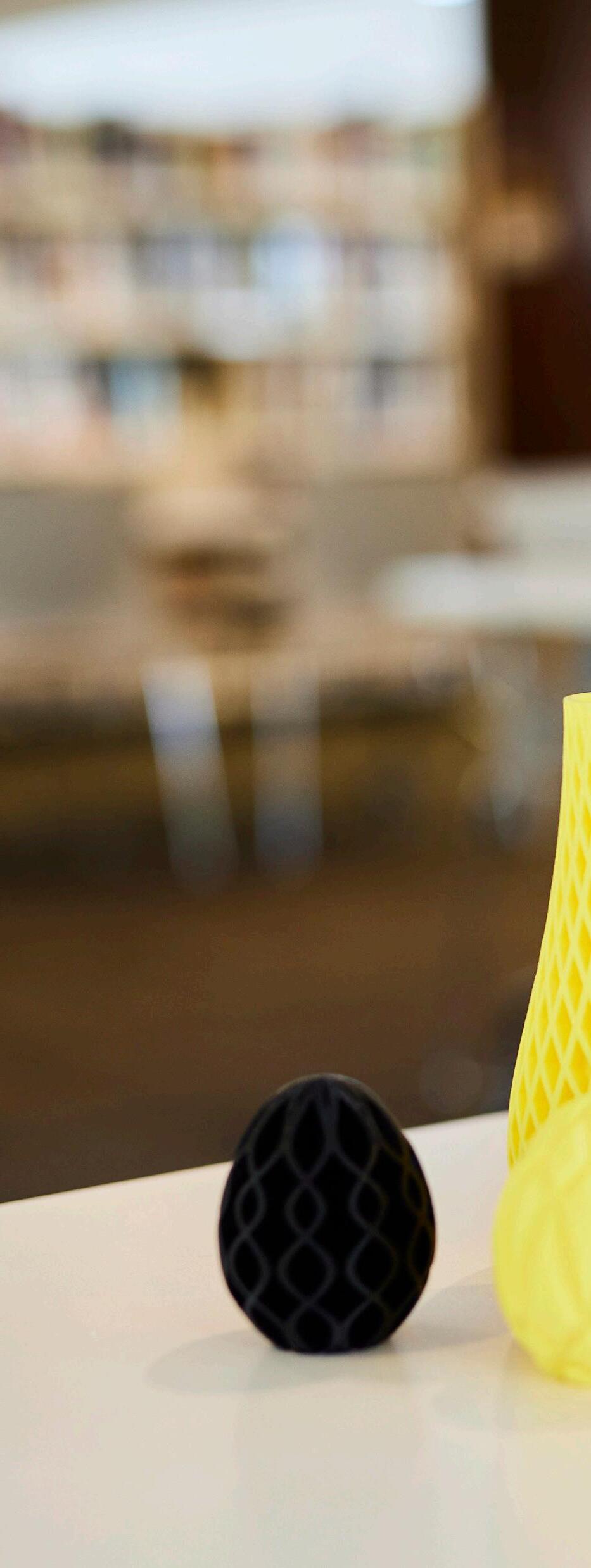
22

23
Library Buildings as Community and Work Spaces
Libraries are often identified as anchor tenants of place-based services that help bring communities together. Libraries play this role because they are staffed, provide complementary services and they attract people of all ages and backgrounds for a host of different reasons.
The demand for work spaces in libraries is growing and evolving as employees and employers negotiate working from home arrangements and people can work on their own businesses from little more than a computer and chair. Workers are looking for facilities and building features that can accommodate private on line meetings and calls. Increasingly, libraries are being used by those who can’t work at home and don’t need to commute.
There is also an emerging demand for libraries to respond to the co-working phenomenon, providing space for people who want to collaborate with others and share resources.
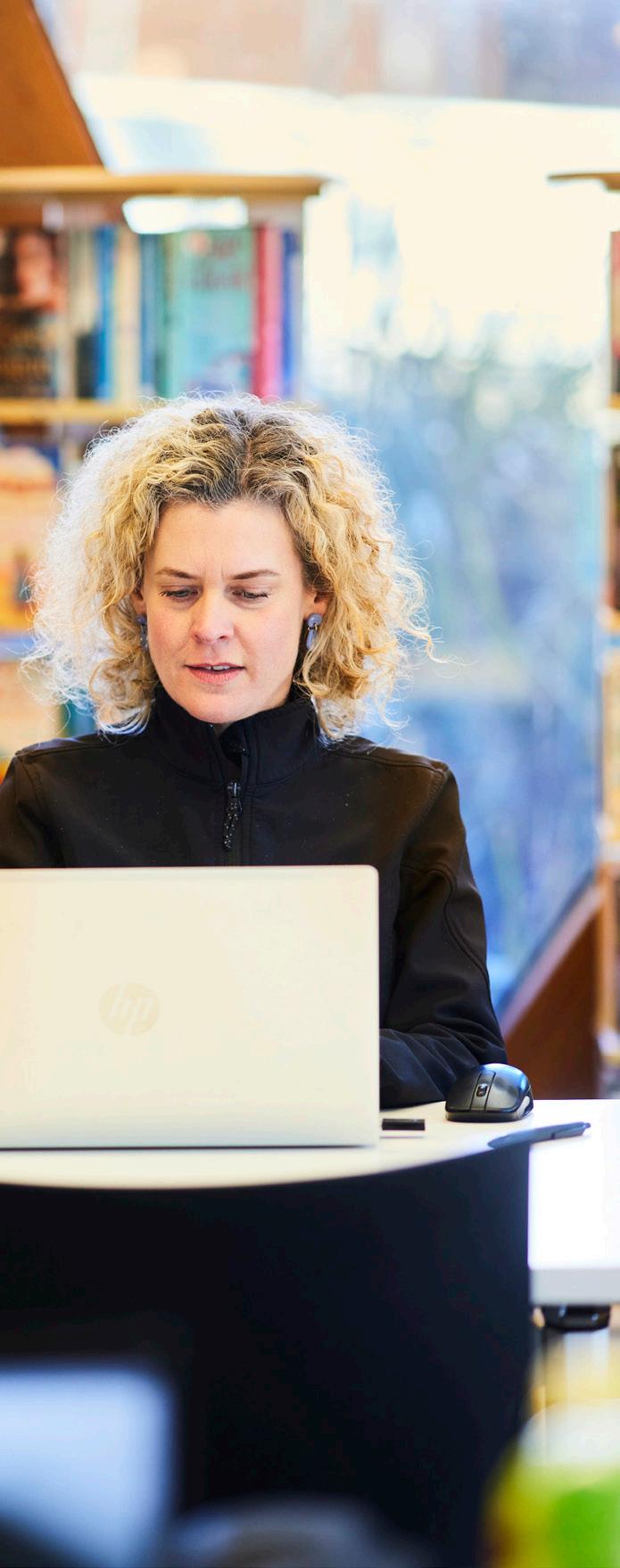
Strategic Risk
Ageing library buildings are rated as a ‘High’ strategic risk for WML. The size and lack of flexibility of spaces do not meet the operational requirements for the provision of contemporary library services, particularly in relation to reading and study areas. The inability to create quiet zones away from noisy activity, negatively impacts on customer experience and ambience. Outdated facilities also impact WML’s ability to successfully attract and retain an appropriately skilled workforce. The cost of operating and maintaining ageing buildings will continue to impact both WML and the Councils.
24
Libraries Contributing to Health and Wellbeing
Public Libraries Victoria recently developed a Health and Wellbeing strategy to highlight the ways that libraries contribute to health and wellbeing, and identify ways to enhance their impact11. Libraries work at the disease prevention and health promotion part of the continuum and support health and wellbeing by: Developing key life skills, including reading, writing and English language skills. Supporting digital literacy by providing free access to technology, Internet, IT training and assistance. Providing safe spaces for people experiencing homelessness, family violence and other crises and challenges. Offering health and wellbeing services and supports, often in partnership, including meditation, Tai Chi and yoga. Hosting specialist health and wellbeing services at the library, such as counsellors, nurses and maternal and child health specialists. Running programs and events that bring people together, such as morning teas, arts and crafts sessions, and social and recreational support for at-risk groups. Sharing brochures, pamphlets and other information on behalf of healthcare providers and raising awareness of key community needs and challenges, including family violence, mental health, drug and alcohol abuse, and gambling addiction.
Responding to the COVID-19 Pandemic
The COVID-19 Pandemic continues to impact on the community and has disrupted the use and delivery of library services since early in 2020. The Pandemic is forcing institutions and individuals to rethink priorities in relation to the maintenance of good physical and mental health, social connections and the proximity of services in local communities.
Enabling social distancing and reducing the density of crowds in confined spaces will remain a concern for many. Library spaces will need to be open and generous. “Contact-less” design features will become more common. Ventilation systems that remove potentially contaminated air, automatic doors, smart phone linked elevator buttons, voice activated lights, and a plethora of other contact-less features may become the standard within indoor spaces. Simple design may prevail to mitigate dust and uncleanliness. Natural sunlight, fresh air and the incorporation of outdoor spaces may increase.
The Condition of Whitehorse Manningham Libraries
Libraries provide a safe space for people to connect with others. They are inclusive, welcoming spaces. We know that there’s an epidemic of loneliness in Australia. And that loneliness is detrimental to both physical and mental wellbeing. So, libraries provide a whole range of activities that are designed to support social connection. And combat loneliness.
Angela Savage, CEO Public Libraries Victoria.
Critical issues for WML are the age, size and condition of library buildings. The poor physical condition and lack of amenity in older libraries work against inclusive community use. The majority of the Whitehorse and Manningham libraries lack the size and flexibility to support contemporary service delivery models and meet the needs of changing demographics.
25
9 i.d.community. City of Manningham, Household Summaries 2021 10 2021-2025 WML Library Plan, pg. 12 11 Libraries for Health and Wellbeing. A strategic framework for Victorian public libraries towards 2024. 2021 State Library of Victoria and Public Libraries Victoria.
A review of WML services and infrastructure in 2021 by I & J Management identified that “library infrastructure in both Councils is in need of additional investment to modernise facilities and improve the library experience for the community both now and into the future” . The report found that the age, condition and size of the majority of the libraries across the region to be significantly below contemporary standards and inhibit the provision of services that respond to community expectation. The report found that for a population of 309,000, the WML buildings are 40 - 50% undersized compared to the floorspace recommendations in the People Places12 Standard and recommended the renewal of five of the eight WML libraries.
Based on visual inspections of all libraries and feedback and interviews with library staff a number of issues were identified. Not all, but many of the libraries are impacted by the following.
� Lack of seating and study spaces
� Lack of program and activity spaces
� Lack of quiet and noisy zones
� Insufficient power points
� Outdated customer service areas
� Inflexible and undersized spaces suitable for programs, activities and events
� Barriers to implementing technology solutions
� Accessibility issues
� Inadequate back of house areas
What Library Users say about WML
Each library has a different usage profile influenced by its location, size, local community, accessibility, and condition. Libraries built before 1996 served smaller Local Government Areas, and their catchments have changed with increases in housing density and the make up their communities.
Warrandyte and Doncaster libraries are the only two libraries built in the last 30 years. There was a major refurbishment of the Nunawading Library in 2010 and the Box Hill Library last had a refurbishment in 2018. There have been no significant upgrades of the Pines, Bulleen or Vermont South Libraries since they were opened. The 56 year old Blackburn Library had a refurbishment in 2000, and the building is now well below contemporary library standards.
WML regularly undertakes a survey of users to determine their satisfaction with the service and to find out what is important to them. In the 2021 Library Community Survey it is clear the impact of libraries on people’s lives continues to be significant. 87% of respondents agreed that the library impacts their life in a positive way and 94% of respondents agreed or strongly agreed that the library was important or very important to them. The majority of respondents also agree that the library:
� Encourages them to read more
� Helps them find information that they need
� Increases their knowledge
� Helped their children develop literacy skills
26
Forecast population by suburb Current total gross floor area approx. m2 People Places Standard m2 Difference WML vs Standard Whitehorse libraries 4,784 8,300 42% below Manningham libraries 3,033 6,500 53% below
12 People Places; A Guide for Planning Public Library Buildings. State Library of New South Wales, February 2022. 13 Improvements to uniformity and number of opening hours at some locations have since been implemented. An Extended Hours model will be introduced at Warrandyte Library in 2023 to increase access to the facility beyond the regular opening hours.
Top 5
Important things to library users
� Items for loan
� Helpful staff
� Library website and online resources
� Consistent opening hours
� Library as a space to do your own thing
Reasons people visit
� To borrow books and other resources
� For a place to read
� For a place to work or study
� For children’s or youth activities
� To find information
Respondents were asked to comment on library buildings and when asked what they would like their library to look like, the five most frequent responses were:
� Clean and up to date facilities
� Increased seating
� Increased program spaces
� Increased quiet study areas
� Extended and consistent opening hours13
Comments have also been made about the inconsistent standard of facilities throughout the region, e.g., the difference between the Doncaster Library and The Pines and Bulleen Libraries. All responses were generally consistent with previous surveys.
Dissatisfaction with the opening hours and ageing infrastructure was a common theme in the open ended questions.
Respondents identified the need for upgraded larger library facilities with increased seating and quiet study areas. The majority of negative comments were in relation to noise and lack of quiet spaces and ageing facilities.
Blackburn library is old and outdated and needs to be re-done. Doesn’t even have easily accessible power points for charging laptops and very few tables and spaces to study.
The Pines could benefit from having more space. I also use the Doncaster branch and although busy it’s not cramped and the atmosphere is more inviting.
Box Hill library is getting pretty busy, the computer and available space is occupied lot of times, suggest to expand the availability of computers and library space to read/study (second storey?).
Vermont South Library needs a make-over, feels like it is stuck in the 80’s
27
PART 3
CONTEMPORARY LIBRARY SERVICES

Public libraries have evolved and changed significantly in the last two decades and this has brought enormous growth in the number and range of programs being offered. WML provide adult literacy activities, English language programs and early years’ literacy programs for children aged 0-5 and their families. WML supports digital literacy through the provision of training and free access to computers and the Internet and the importance of this cannot be understated as more and more services and opportunities to participate in society are facilitated on line.
WML are centres for community activity, social interaction and shared cultural experiences. The libraries host a range of events from book launches, author talks, writing workshops, holiday programs, conversation cafes, manga clubs and coding workshops. They support mental health by providing welcoming environments that are free and for everybody and help reduce social isolation. They are places where communities come together and wellbeing is enhanced.
Whitehorse Manningham Libraries are also vital cultural institutions that provide free and equitable access to collections of books, films, music and more. They nurture artistic endeavours of all kinds by providing a place to write and create, engage deeply with art forms, or develop their crafts and skills through access to programs and spaces.
Whitehorse Manningham Libraries are important public spaces, and they need to be able to deliver whole of population benefits. They need to be welcoming and accessible environments that celebrate books and literacy and can accommodate the wide range of uses and users now in modern libraries. Great library buildings bring disparate groups together through flexible building designs that incorporate space to browse, participate, relax, gather, study, work and connect.
“When I moved to Australia 3 years ago, my English was not good. This was the biggest barrier to finding a job although I have work experience that is in demand in Australia. I found the free Conversation Buddies program at the library which offers oneon-one verbal communication in English. I went to Doncaster library once a week, it not only helped improved my English language skills, but also let me know more about Australia’s culture, history, geography and economy. My English has greatly improved. I can now communicate clearly with people and deal with everyday life. Last week, I secured employment, this is another new starting point in my life. I would not have achieved such a good result without the help of the Conversation Buddies program, words cannot express how grateful I am for the help of my tutor and the Doncaster library officers. I will continue to work and study hard, to contribute to Australian society.
Conversations Buddy participant
29
A Service Point Model
Library buildings and services need to be scaled to meet the needs of the communities they are designed to serve. Applying a service point model can help determine the optimal size of a library, what functions it performs, back of house provisions, and operating issues like opening hours, collection size and staffing levels. This approach uses an assessment of
community needs, location and demographic characteristics and considers the availability of other library services to inform decisions about library infrastructure requirements. It is a framework that explains the characteristics of different service points in a tiered library network.
� Library headquarters and central library for municipality. An iconic building that creates a sense of civic pride, and embodies Council’s commitment to lifelong learning and literacy, culture and community
� Large vibrant community spaces. Co-located with or in cultural and civic centres with exhibition and event spaces, galleries and community hubs. Education, hospitality, high density housing and retail services are nearby with good transport links
� Regional cultural and literary activities and events are held
� Incorporates regional support services and may feature specialist collections and services
� Provides access to extensive information technology
� Features multi-purpose function spaces, studios, consulting rooms, meeting rooms, and cafés.
� Includes programs and collections that celebrate local history and cultural heritage
� New programs and services are incubated for the broader library region
� Extensive opening hours, 7 days per week, may include out-of-hours access for eligible members.
60-100,000 plus
DISTRICT LIBRARY POPULATION CATCHMENT
� Welcoming, flexible mid to large community spaces providing a full suite of library programs, activities and services in suburban areas
� Collections curated to meet local interests and needs.
� Size determined by proximity to other libraries, catchment areas, forecast population growth
� Ideally co-located with or near complementary services e.g., Council Customer Service Centres, community and cultural hubs, recreation facilities, retail centres and education services, with good transport links
� Broad range of opening hours and may include out-of-hours access for eligible members.
10,000 - 50,000
COMMUNITY LIBRARY POPULATION CATCHMENT
� Tailored services in smaller buildings to meet primary user’s needs
� Complements services provided by larger libraries nearby and operates for fewer opening hours
� Community lounge feel, with small popular collections, and flexible spaces for programs and events for smaller groups.
� Provides access point to the whole of library network collection
� Operates for fewer opening hours, complimented by “Unserviced access” or out-of-hours access for eligible members.
Up to 15,000
30
FLAGSHIP LIBRARY POPULATION CATCHMENT
ALTERNATIVE OR MACRO SERVICE POINTS
� Demand driven, small scale service points that facilitate access to library services in other community buildings
� May include book lockers, vending machines, holds shelves with self-check facilities.
POPULATION CATCHMENT
Up to 2,000
OUTREACH LIBRARY SERVICES
� Home Library Service delivering books to residents who are housebound or have difficulty getting to the library due to chronic illness, disability, being a carer or restrictions due to ageing
� Library outreach programs delivered at external facilities such as retirement villages and child care centres

� Mobile services like pop-up libraries for events and community activities
POPULATION CATCHMENT
People unable to physically visit a library. Remote communities and events.
DIGITAL LIBRARY SERVICES
� Website access to library catalogue, eBooks, e-audio books, music, magazines, newspapers, local and global information, electronic data bases, wireless printing, web 2 applications 24/7
� On-line programs and events.
POPULATION CATCHMENT
All populations
31
Library Standards
The library sector has prepared a number of well researched resources to assist Councils and library services undertake library infrastructure development and renewal projects. Two key resources, The Australian Public Libraries Guidelines and Standards14, and People Places, A guide for planning public library buildings have been used to inform thinking about the nature and scope of improvements to WML in this IIP.
The Library Standards and Guidelines talk about library operations, including implications for library spaces. People Places is a “how to” guide for the renewal and construction of public libraries.
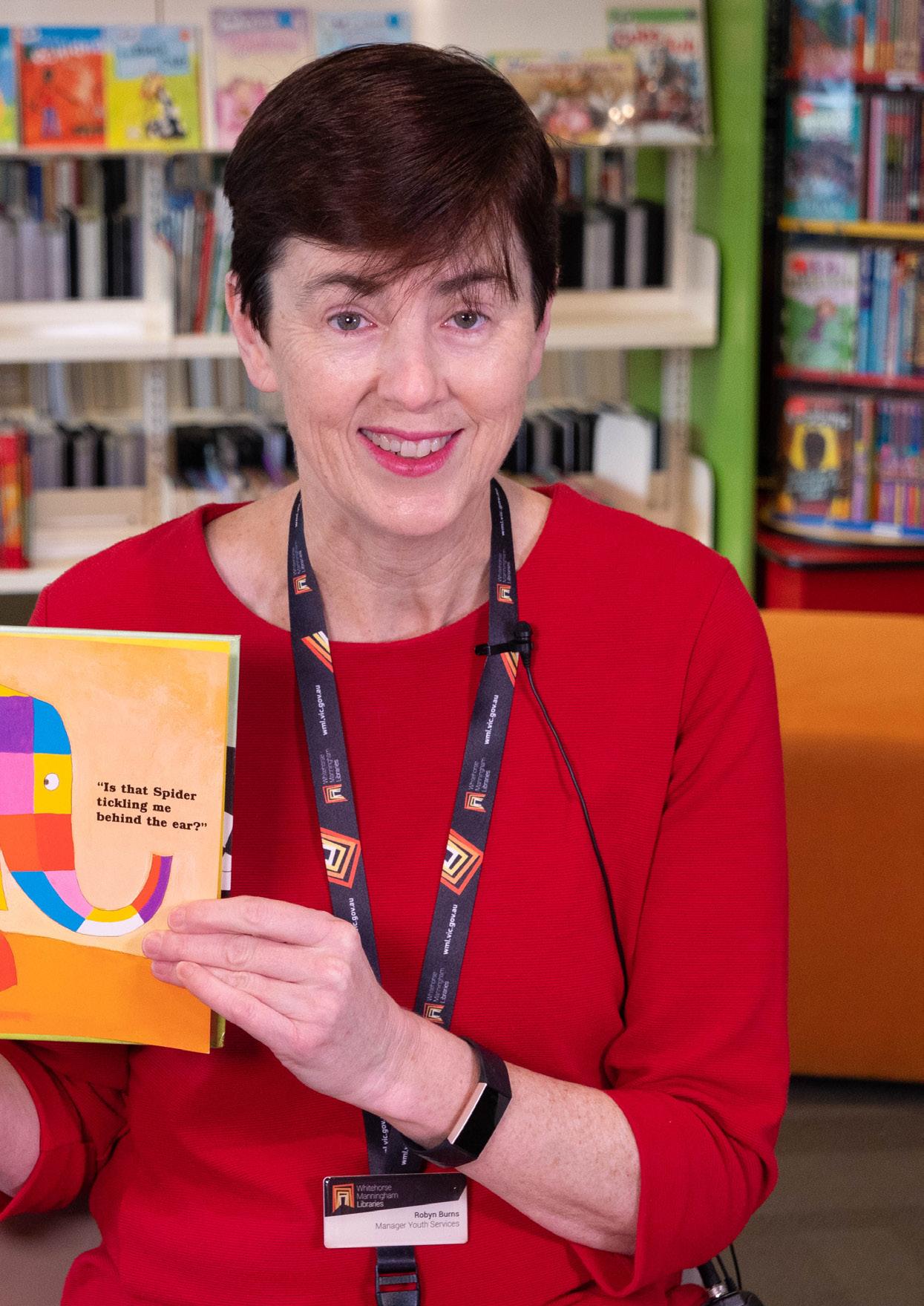
32
Australian Public Libraries Guidelines and Standards
The document establishes standards and guidelines for public libraries across the country that reflect the changing role and different circumstances of contemporary public libraries. The Standards and Guidelines use a theoretical framework that brings together the essential operational components of a contemporary public library. The Framework indicates five key areas where guidance can be provided to enhance the operation of public libraries and include Community Engagement, Service Management, Service Offering, Service Delivery and Community Outcomes. Guideline 10, of 14, relates to the provision of library facilities which are:
� convenient and accessible to the public and serve the identified needs of the community are attractive,
� functional and stimulate interest in library services
� designed for flexible use, efficiency in operation and sustainability, and � safe and secure for library users and staff.
The Framework for Australian Public Libraries also identifies six broad individual and community outcomes from the provision and use of public library services, and these were outlined on pages 6 and 7 of the IIP.
People Places. A guide for planning public library buildings
People Places. A guide for planning public library buildings15 is a theoretical and practical resource that provides a methodology for planning and designing new or refurbished public library buildings. New library buildings and thoughtful refurbishments of existing libraries attract membership and stimulate the interest of non-users. An essential element of the success of new libraries is good design.
This is not just about the way a building looks but how well it functions and serves its purpose for the community. Attention is now on distinctive spaces for diverse user groups; retailing approaches to ambience and collection display; high quality interior design; comfortable ‘non-institutional’ furniture; appropriate lighting and signage; pervasive technology and eating and drinking facilities, as well as great looking buildings.
Recent experience in Australia and overseas has demonstrated that well planned and beautifully designed libraries increase usage and provide a range of significant community wellbeing and liveability outcomes. (A number of examples illustrate this point in Part 5 of the IIP).
The right areas for the right range of library functions underpin the delivery of high quality contemporary library services. People Places, with its population and service based benchmarks, has calculated the areas required for all library functions to support a library service for different sized catchments and the guide recommends:
33
14 The Australian Public Libraries Guidelines and Standards. May 2021. Australian Library and Information Association (ALIA) and the Australian Public Library Alliance (APLA). 15 People Places; A Guide for Planning Public Library Buildings. February 2022. State Library of New South Wales. Projected population served Min m2 per 1,000 people Fewer than 20,000 57.5 20,001 to 35,000 39 35,001 to 65,000 35 65,001 to 100,000 31 more than 100,000 28
PART 4
THE INFRASTRUCTURE IMPROVEMENT PLAN
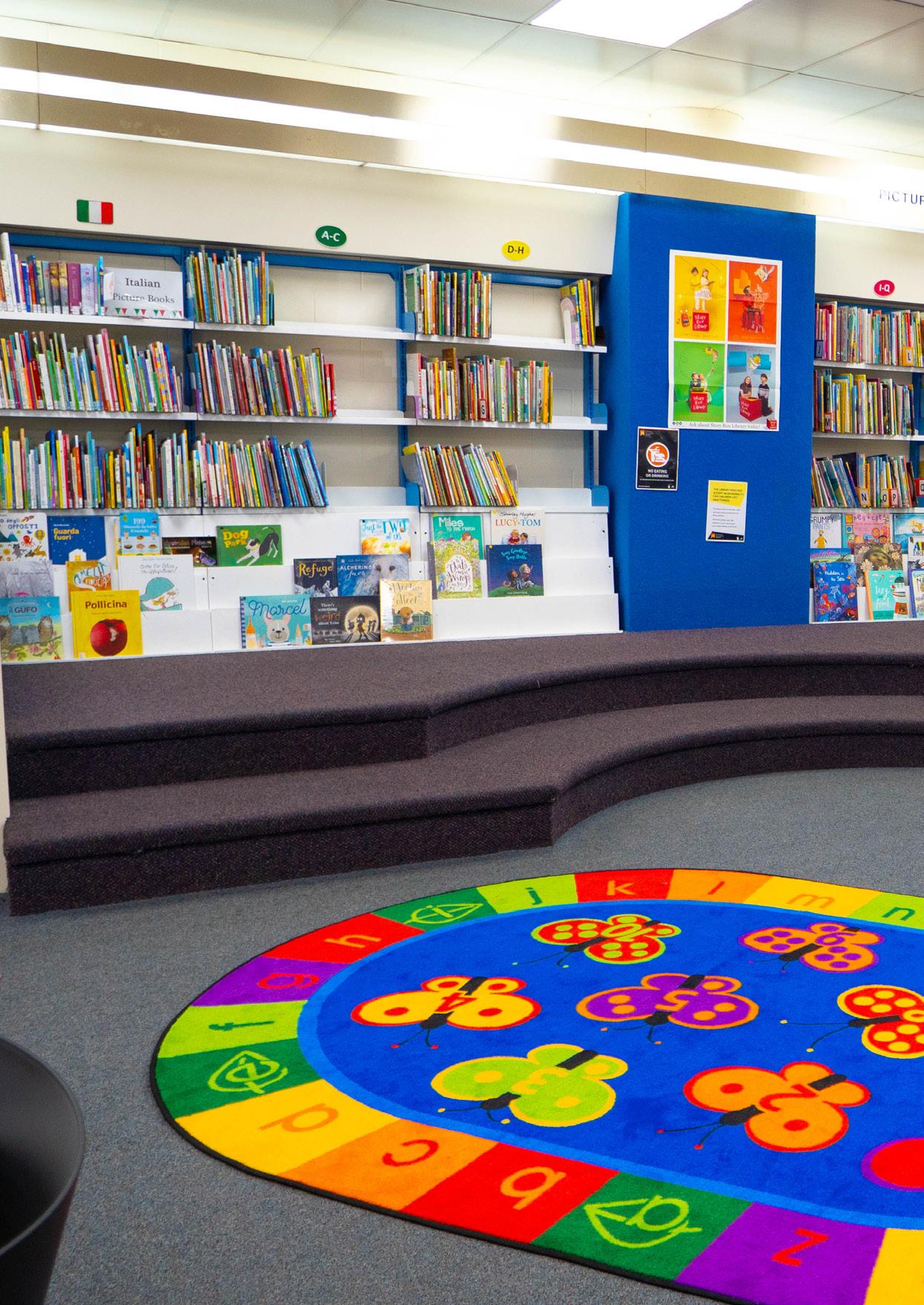
In addition to library planning resources identified in Part 3, it is proposed that all refurbishments and new library developments be informed by an agreed approach or set of Guiding Principles. These Guiding Principles sit alongside a commitment to best practice in the delivery of each stage of any future library developments.
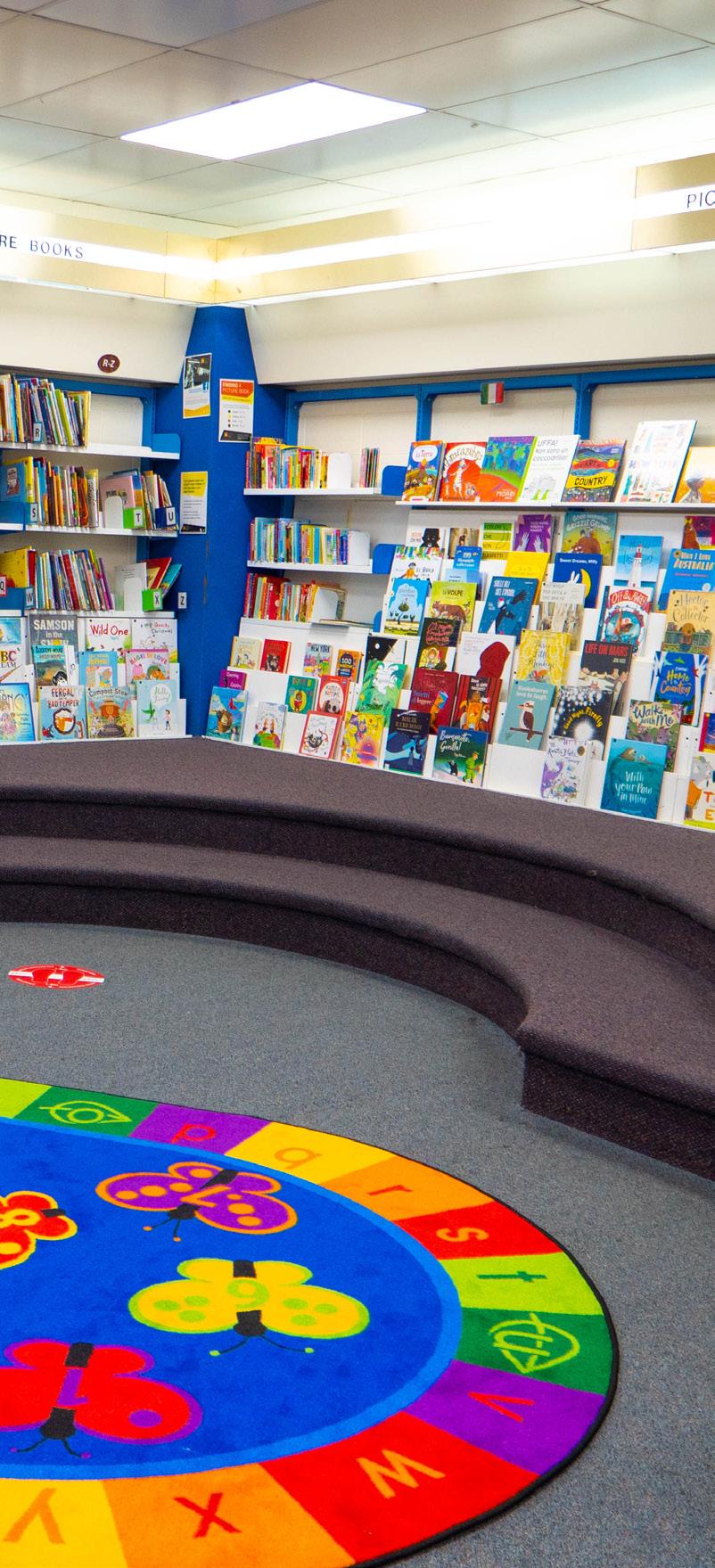
35
Guiding Principles for Library Improvement and Development
i. Customer centric design that responds to local needs
The renewal and development of WML will be informed by characteristics of the communities they serve - rather than a one size fits all approach. Library spaces will be flexible and capable of meeting whole of population needs.
ii. Welcoming spaces - for everyone
The library is a neutral space, welcoming the broadest and most diverse audience. Library renewal projects and new libraries will be quality civic spaces that proudly illustrate the importance Council places on building community capacity through learning, creativity and connection. New libraries will be designed with a strong relationship to the streets, open space and buildings that surround them. Spaces around libraries will invite people to come together and sit, chat, take a break or meet with others. The library will strive to be a visible symbol of local culture and identity.
iii. Accessible and inclusive
Library renewal and development projects will embrace the notion of Universal Design, which is, design for everyone. This principle ensures that libraries meant for everybody are accessible by everybody. Universal design is a design philosophy that ensures that products, buildings, environments, programs, services and experiences are innately accessible to as many people as possible, regardless of their age, level of ability, cultural background or any other differentiating factors. Universal design distinguishes itself from accessible design by focusing on user-centred design from the earliest stages of a project.16 It is relevant to all members of the community and staff, those with mobility or accessibility needs and those without them, because at some time anybody could develop or be caring for someone with accessibility needs. Importantly, the application
of Universal Design principles helps ensure public libraries support positive ageing.
iv. Integration and collaboration
Libraries are often anchor tenants in multiservice developments and attract the highest usage and broadest spectrum of community. When planned and delivered effectively, libraries can be the catalyst for reactivation and regeneration of precincts. Co-location and partnership arrangements help consolidate the capital cost of investment in different types of community infrastructure. It brings people to one place where they can receive multiple services. Libraries can succeed in civic and cultural hubs, community hubs, recreation, and retail hubs.
v. Flexible and adaptable
Building relevance and flexibility can ensure the library will be there to help communities navigate changing times. Library development and renewal projects will be designed and built with the long term in mind. They will have room for growth, have flexible spaces that can adapt to changing service and community needs. In existing buildings solutions to maximise and increase the flexibility of the available space include things like collections on wheels, furniture that can be easily moved, acoustic treatments that manage sound, information pods replacing large service desks, and furniture that creates privacy.
vi. Environmental responsibility and sustainability
New and renewed libraries will embrace the concept of sustainability or green design. Energy efficiency will be at the heart of building design and heating and cooling systems. Buildings will be located and designed with consideration given to walkability, cycling, transport, natural ventilation, daylight, water and waste management, recycling of resources and life cycle maintenance. Connection to and inclusion of outdoor spaces will extend opportunities for programable, social and reading spaces.
36
vii. Equity of access
Library development and renewal will promote fairness and equality in outcome. There are barriers faced by some people to accessing library services. Not everyone has the same and equal opportunity to participate. These barriers can emerge through things like social and/or economic disadvantage, disability, low levels of literacy, cultural background or geographic location. It may be necessary to invest more resources and target some communities to address issues of inequity that exist in some parts of the community.
viii. Technology as a solution
Public libraries now embrace technology as a core service and technology as a service enabler. Increasingly information and services (including many government services) are provided only on-line, and not all people have the knowledge and equipment to access the things they need. Libraries must continue to provide Internet, computers and training to develop digital literacy, house dedicated learning spaces that raise awareness of new technologies and provide opportunities for practical skills development.
Libraries are also collaborating with others and exploring opportunities to innovate with technology for the benefit of communities. Free Wi-Fi, plug in places for mobile devices and access to computers and printers are important, but innovations in ICT will require flexible and adaptable design to enable libraries to keep providing access to leading edge technologies. Library facilities must be able to respond to changes and redundancy in technology.
digital resources. These practices may need to continue in some form. Enabling social distancing and reducing the density of crowds in confined spaces will remain a concern for many. Library spaces need to be open and generous. “Contact-less” design features will become more standard.
ix. Looking through the
COVID-19
Lens Libraries successfully adapted and changed during the Covid pandemic to keep members connected to programs and services. Libraries established click and collect borrowing arrangements, home deliveries, put programs and events on line and actively promoted access to the library’s variety of
37
16 Whole of Victorian Government Universal Design Policy. Department of Families, Fairness and Housing, State Government of Victoria, Australia. 2021
Library Branches and Distribution
All eight Whitehorse Manningham Libraries offer standard services like free Wi-Fi, public use computers, printing, copying, collections, study spaces and casual seating. They all deliver programs for children, young people and adults (the quantity varies due to location and capacity) and provide library services to facilitate access to collections, digital information and the use of new technology.
RESIDENT SUBURBS
Resident Suburbs
Whitehorse and Manningham
Whitehorse and Manningham
WM branches differ dramatically in their floor areas, program spaces, accessibility, the amount and quality of study spaces and casual seating, opening hours, collection sizes, public toilets and back of house work areas.
The below map shows the distribution of libraries across the WML Network.
City of Whitehorse
• Blackburn 3130
• Blackburn Nor th 3130
• Blackburn South 3130
• Box Hill 3128
• Box Hill Nor th 3129
• Box Hill South 3128
• Burwood 3125 (only if east of Warrigal Rd & nor th of Highbur y Rd)
• Burwood East 3151
• Forest Hill 3131
• Mitcham 3132
• Mont Alber t 3127
• Mont Alber t Nor th 3129
• Nunawading 3131
• Surrey Hills 3127 (only if east of Warrigal Rd)
• Vermont 3133
• Vermont South 3133
38 TEMPLESTOWE BOX HILL NORTH DONCASTER MONT ALBERT NORTH TEMPLESTOWE LOWER BULLEEN BURWOOD BOX HILL SOUTH BOX HILL SURREY HILLS MONT ALBERT R NGWOOD NORTH VERMONT SOUTH VERMONT PARK ORCHARDS M TCHAM DONVALE WARRANDYTE FOREST HILL NUNAWADING BURWOOD EAST BLACKBURN SOUTH BLACKBURN BLACKBURN NORTH DONCASTER EAST WONGA PARK WARRANDYTE SOUTH MELBATUNNEL THOMPSONSROAD LANDSCAPE DRI EV JUMPING CREEK ROAD DONCASTER ROAD HOLLOWAY ROAD PARKROAD GEORGE STREET F T Z S I M O N S L ENA T RA M ROAD PORTER STREET A Y R S T REET REYNOLDS ROAD LESLIE STREET MANNINGHAM ROAD C H U R C H R O AD HARRIS GULLY RO AD HEIDELBERG-WARRANDYTE ROAD V C T O R I A S T REE T JAMES STREET FOOTE STREET TINDALSRO A D HIGHSTREE T W E T H ERBY R O A D BRYSONSROAD ANDERSONS CREEK ROA D WILLIAMSONS ROAD SERPELLSROAD YARRASTREET FALCONERROAD HOMESTEADROAD KING STREET K N E E S RO AD TEMPLESTOWE ROAD RINGWOODW A ETYDNARR OR AD MILNE ROAD YARRA ROAD STINTONS ROAD EASTLINK CROYDONROAD BU L L EENROAD BELMORE ROAD EASTERN FREEWAY SPR N GV A L E R O AD WH TEHORSE ROAD H E A T H E R D A L E R O A D BURWOOD HIGHWAY E L G AR RO AD BLA CKBURNRO A D S T A T I ON S T RE ET MITCHAMROAD SPRINGFIELD ROAD M D DLE B O R O U G H R OAD SU RRE Y RO AD DEEP CREEKROAD WARR G A L R O AD RIVERSDALE ROAD MONT ALBERT ROAD CANTERBURY ROAD HIGHBURY ROAD BORONIAROAD MONASH KNOX MAROONDAH NILLUMBIK BANYULE BOROONDARA
²
The location and distribution of libraries across the two municipalities does matter. The following table for the City of Whitehorse illustrates how the proximity of a library can impact on membership and more broadly, community use of library services. It shows
that library membership as a percentage of the population is much higher in suburbs with a library nearby. The suburbs of Blackburn, Nunawading and Box Hill have a much higher proportion of members in their populations than Burwood, Surrey Hills and Mont Albert.
39
Forecast population by suburb WML Members 2022 Population Membership % of population Burwood *Not all in the City of Whitehorse 1,401 12,543 11.2% Surrey Hills *Not all in the City of Whitehorse 864 5,430 15.9% Burwood East 1,723 10,778 16.0% Mont Albert North 947 5,837 16.2% Mont Albert 1,050 4,847 21.7% Box Hill South 1,897 8,629 22.0% Blackburn South 2,647 11,022 24.0% Forest Hill 2,969 10,866 27.3% Blackburn North 2,161 7,724 28.0% Vermont 3,012 10,618 28.4% Box Hill North 3,679 12,467 29.5% Vermont South 3,595 12,044 29.8% Mitcham 5,082 16,935 30.0% Box Hill 5,408 14,603 37.0% Nunawading 4,570 12,200 37.5% Blackburn 5,708 14,636 39.0% None 139 -46,713 171,167 27.3%
In the municipality of Manningham, the suburbs with the lowest percentage of library membership are Wonga Park and Park Orchards.
Library Assessments - current state and future vision
The following section includes an assessment of each of the eight libraries in the WML network. The assessments provide a brief overview of activity levels, the current status of the building, community use and key characteristics, and a vision and rationale for library renewal or development. The library activity statistics are from the 2018/19 financial year as they represent a more accurate picture of typical library use prior to the COVID-19 Pandemic. At the time of writing, participation in library activity was trending up suggesting a return to pre-pandemic activity levels is anticipated.
Improvement opportunities exist in all libraries as most libraries in the WML network have not been upgraded in the last decade. For each library, the vision for the service has been proposed in line with the service point model, contemporary library standards and an appreciation of the community the library serves.
40
17 At 30 Sept 2022 YTD visitation had returned to 70% of pre-pandemic levels, loans of collection items to 85% and program attendances to 69%.
Forecast population by suburb WML Members 2022 Population Membership % of population Wonga Park 241 3,170 7.6% Park Orchards 514 4,496 11.4% Donvale 3,259 13,066 24.9% Templestowe Lower 3,737 14,184 26.3% Bulleen 3,008 11,303 26.6% Templestowe 4,834 16,930 28.6% Doncaster East 9,693 31,366 30.9% Doncaster 7,866 25,379 31.0% Warrandyte & Warrandyte South 2,120 5,932 35.7% None 91 -35,272 125,827 28.0%
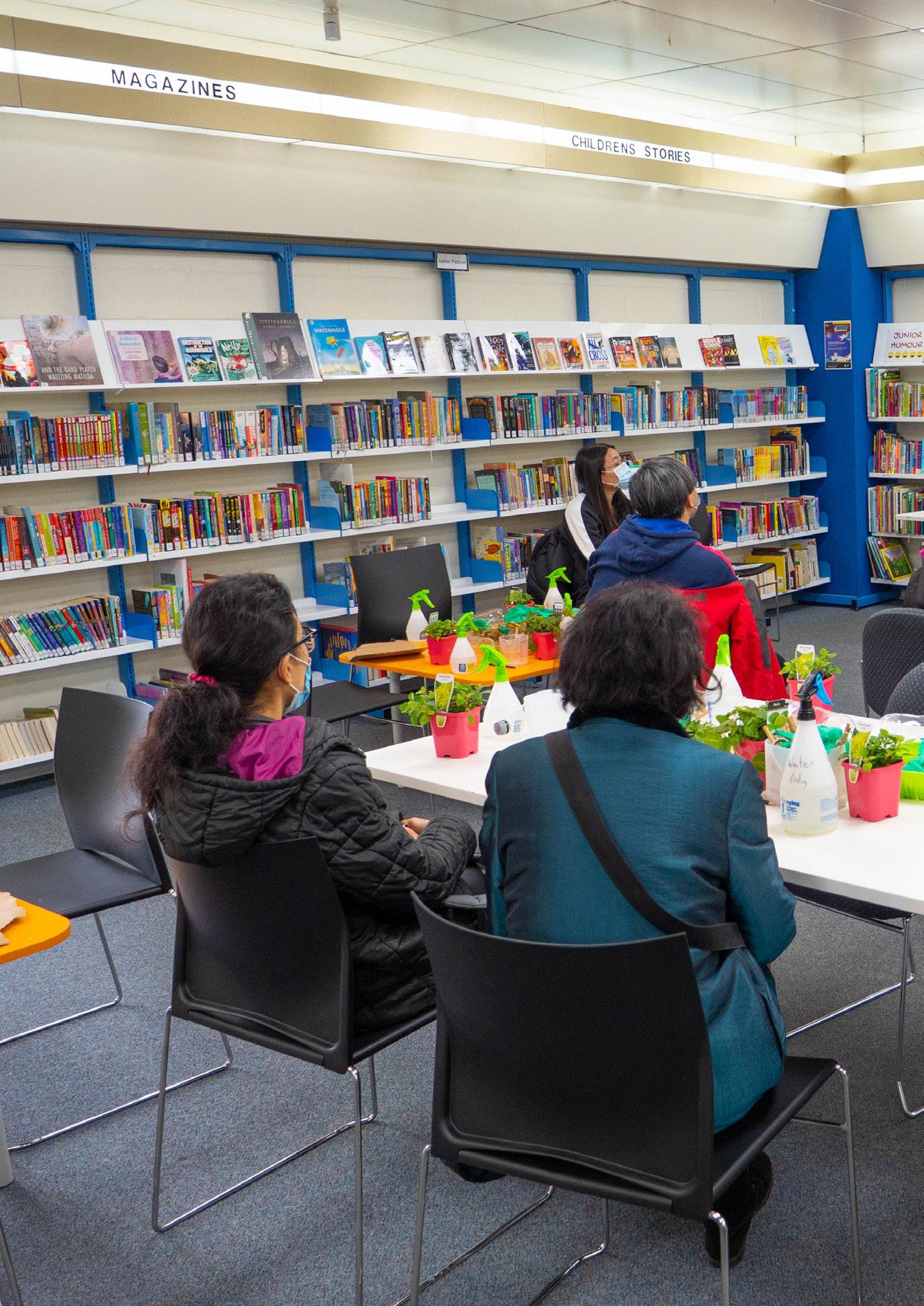
41
Whitehorse Libraries

Current Status
Box Hill Library was built in 1973 and is a Council owned asset. It is the largest library in Whitehorse at 1,800 m2. It is close to Box Hill Central, with educational, civic and community facilities and services nearby. There are also several places of worship in the area. Proximity to public transport is excellent.
Nearly 40% of all visits to a library in Whitehorse occur at Box Hill. The user base is culturally diverse and there are community meeting rooms and an IT training room for hire. Branch library and outreach services along with regional support functions (Administration and IT) operate from the building.
The library has undergone a number of partial refurbishments, the last in 2018, to improve access to study, program and reading spaces. Despite these changes, demand for study and workspaces often exceeds supply, particularly during exam times. Spaces in the library are inflexible and don’t meet the needs of the changing demographics in the area. The building is ageing and requires regular maintenance.
An iconic civic building to function as a ‘Town Square’ and anchor the City’s cultural, community and civic precinct. Cultural diversity will be celebrated with the provision of local heritage and community-focused collections and programs. Creativity will be fostered with spaces and programs such as makerspace, creative and technology labs and exhibition space. Learning and ideas will be incubated with generous technology rich areas for study, work and reading. Community connection will be supported with the provision of spaces for meeting, collaborating and gathering. The library will be integrated with other communityfocused, civic and cultural services. To improve efficiency, all regional library support services will operate out of this location. The building will showcase environmentally sustainable design and features.
The library is in a designated Metropolitan Activity Centre where high density living is concentrated and will grow. Smaller living spaces, coupled with many single person households, places greater importance and need for safe and inclusive community social spaces. There are nearby educational institutions and extensive retail, employment, community and cultural opportunities. The number of young people and students is higher than the average for the municipality.
42
Box Hill Built 1973
with
and Connection Visitors per year Open weekly Computer and Wi-Fi bookings Program attendances Total floor area 268,684 61 hrs, over 7 days 17,463 25,287 1800 m2 including WML IT/Admin
Rationale Vision - A new Flagship Library
a focus on Learning, Culture
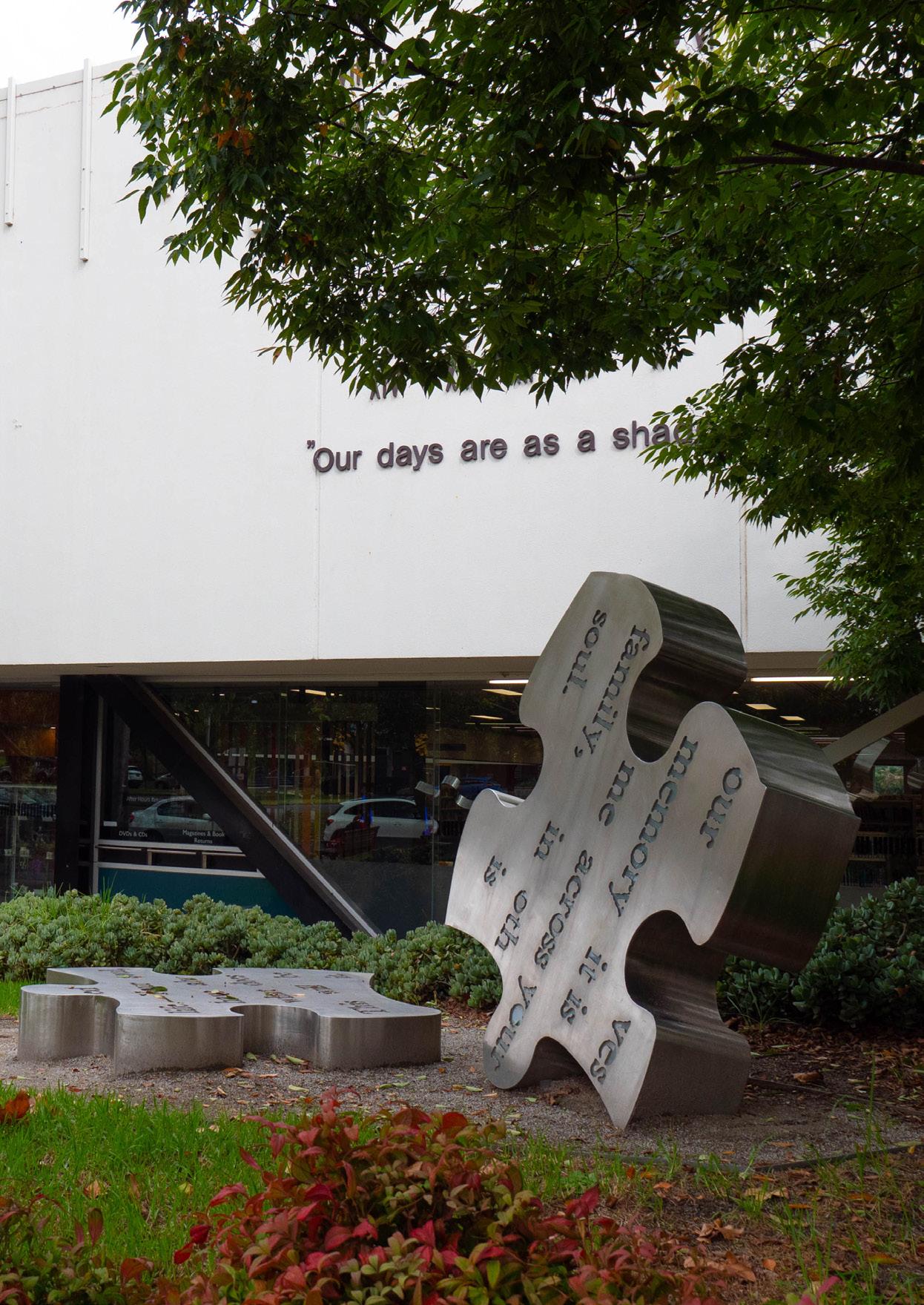

44
Nunawading

Built 1976
Current Status
Nunawading Library was built in 1976 and is a Council owned asset located adjacent to the Whitehorse Civic Centre. The new Whitehorse Performing Arts Centre and the Walker Park sports facilities are close by. A substantial renovation of the Library occurred in 2010.
The Library is home to the largest collection and has the highest loans of any library in Whitehorse. Nearly 40% of all physical items borrowed in Whitehorse come from the Nunawading Library. Children’s literacy programs are very popular as are adult programs, most notably author talks. The user profile of this library is dominated by 35-49-year old’s, with a higher proportion of families than other libraries.
There are no private study or meeting rooms in this library and there is a significant demand. The back of house area located on the lower level the library houses WML regional support services including collection acquisition, programs and makerspace teams and book sale storage for Friends of The Library. Annual fundraising used book sales are held in the adjacent Civic Centre.
Vision. A new District Library with a focus on Reading, Literacy, Children and Families
A welcoming and generous District Library with a focus on reading, literacy, children and families.
Designed to engage children as they learn, play and explore. Spaces, collections and programs for children, families and parents. Co-located with other children’s and early years services. A browsing library with a large collection and program spaces to celebrate and promote reading and writing. Spaces to facilitate the hosting of literature festivals, high profile author events and writer in residence programs. Spaces that support quiet, private study, contemplation and reading.
Rationale
This library should continue to house the largest and most comprehensive collection in Whitehorse. Borrowing levels are higher in this library and meet the needs of children and older, educated members of the community. There is a high level of interest in and attendance at author and literature events at this library. The size of the catchment, number of families in the area and socio-economic profile support a focus on children, families, literacy and reading.
45
Visitors per year Open weekly Computer and Wi-Fi bookings Program attendances Total floor area 235,395 54.5 hrs, over 7 days 52,172 14,841 1770 m2
Vermont South
Built 1990
Current
Vermont South Library was built in 1990 and is a Council owned asset. There have been no significant changes or improvements to the library since construction. The library is located near the Vermont South Shopping Centre and a mix of community facilities including kindergarten, aged care facilities, community house and learning centre, and sports facilities. There is good parking around the library. This purpose-built library has worked well for the community, and it receives the highest satisfaction ratings of all Whitehorse libraries. The building is, however, dated. The entrance and access to the building needs adjustment to improve accessibility. The kitchen, meeting room and public and staff amenities no longer meet community expectations. The information and circulation desks are inefficient and don’t accommodate the integration of RFID equipment. The collection layout can be improved and casual reading, study spaces and program areas increased. Indoor and outdoor areas could be better integrated.

Vision - A refurbished welcoming and modern District Library with a focus on community connections and learning
A familiar place reimagined at the heart of a community services precinct. A refurbished library with a welcoming entrance that encourages people to come together and connect. An accessible place with public and staff amenities that meet contemporary community needs and expectations. A library with quiet and noisy zones and flexible spaces, including outside, for different uses.
Rationale
This purpose-built library continues to be popular and well used. The location works with several complementary activities and services in the area. A major upgrade is overdue to provide a modern ambience and improve accessibility, user experiences and operating efficiency.
46
Open weekly Computer and Wi-Fi bookings Program attendances Total floor area 118,029 45.5 hrs, over 6 days 14,123 11,784 864 m2
Status Visitors per year


48
Blackburn
Built 1965
Current Status
The Blackburn Library was built in 1965, is Council owned and is the oldest in the network. It is also the smallest library, with the smallest membership, visits, loans and program participation of all Whitehorse libraries.
Since the library was built, the Box Hill Library was built 2.7km to the west and the Nunawading Library was built 3km to the east along the Belgrave railway line. The library serves a relatively discrete local area or neighbourhood impacted by the nearby rail line, shops and major roads. The library is located on a constrained site with good proximity to public transport, commercial, recreational and community facilities. Despite the location, the library lacks street presence due to its uninviting and dated façade. While the library is rated as very important to those that use it, it has the lowest satisfaction level of all WML due to its size, limited seating and study areas and poor amenity.
Vision – Facilitate access to library services tailored to the local area needs
Explore options to provide access to library services that meet the needs of the Blackburn community, delivers efficient service outcomes and maximizes community benefit.
Rationale
The Blackburn Library is well past its’ prime. It is small and aged, and in poor condition. The IIP provides an opportunity to consider the future of library services in Blackburn in the context of other library renewal and development projects in Whitehorse.
49
weekly Computer and Wi-Fi bookings Program attendances Total floor area 61,077 35.5 hrs, over 5 days 8,728 4,046 350 m2
Visitors per year Open
Manningham Libraries

Doncaster
Built 2012
Current Status
The Doncaster Library is in a Council owned facility and opened in 2012. It is the largest and busiest library in Manningham and the City’s Flagship Library. It is co-located with several other Council services, a café, bookable meeting spaces and a number of independent community organisations. The library is adjacent to the Council’s offices and close to Westfield Doncaster Shopping Centre and transport hub. The library has a culturally diverse user base and attracts a range of users over the day and the week.
There is a demand for more quiet study/ workspaces, and the library has no small meeting rooms for private study or meetings. The circulation and information desk occupies a large area at the entrance to the library. The back of house area could work more efficiently. Paved areas outside the library could be explored to provide an indoor/ outdoor experience for users. The design of the building means that noise travels around the library and into other parts of the building. The opportunity exists to examine acoustic treatments and the use of space to better manage noise in the building.
Vision - A refurbished Flagship Library that anchors a vibrant Community and Cultural hub
A Flagship Library anchoring a community and cultural hub, that provides an integrated service for a range of community needs. A modern, technology rich library with quiet and serious spaces and loud and playful spaces. A gathering place in a high density, mixed use urban village. A civic building that embodies Council’s commitment to learning, culture, community connections and sustainability.
Rationale
This library is very well used by different groups of people, including large numbers of students. At times demand for library work and study spaces exceed supply. It is 10 years since the library opened and time to examine library usage and, where appropriate, modify the layout of back and front of house spaces to optimize use. Medium and high-density housing is concentrated in this precinct, and more is planned.
50
Visitors per year Open weekly Computer and Wi-Fi bookings Program attendances Total floor area 353,666 61 hrs, over 7 days 62,943 16,266 1600 m2
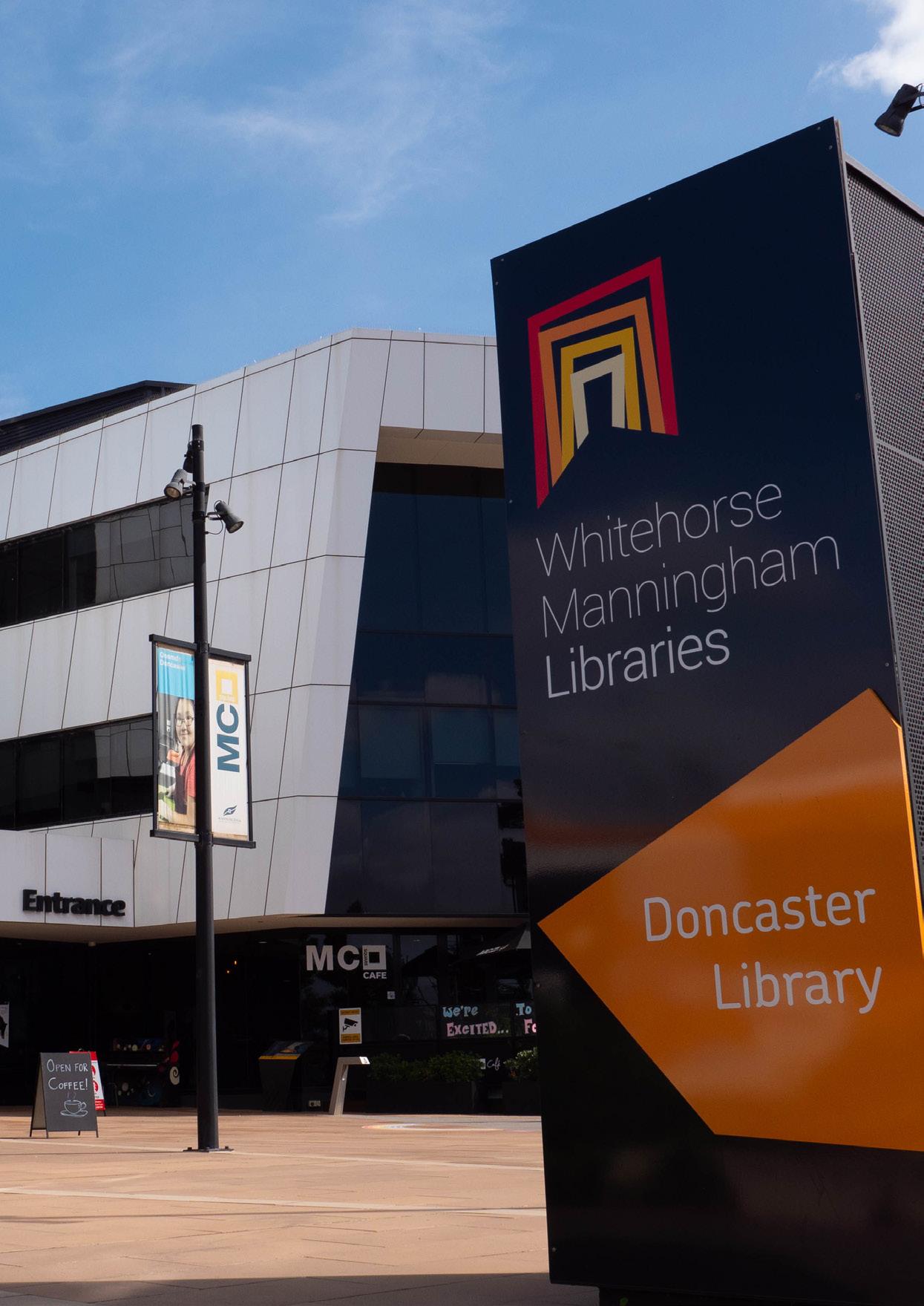
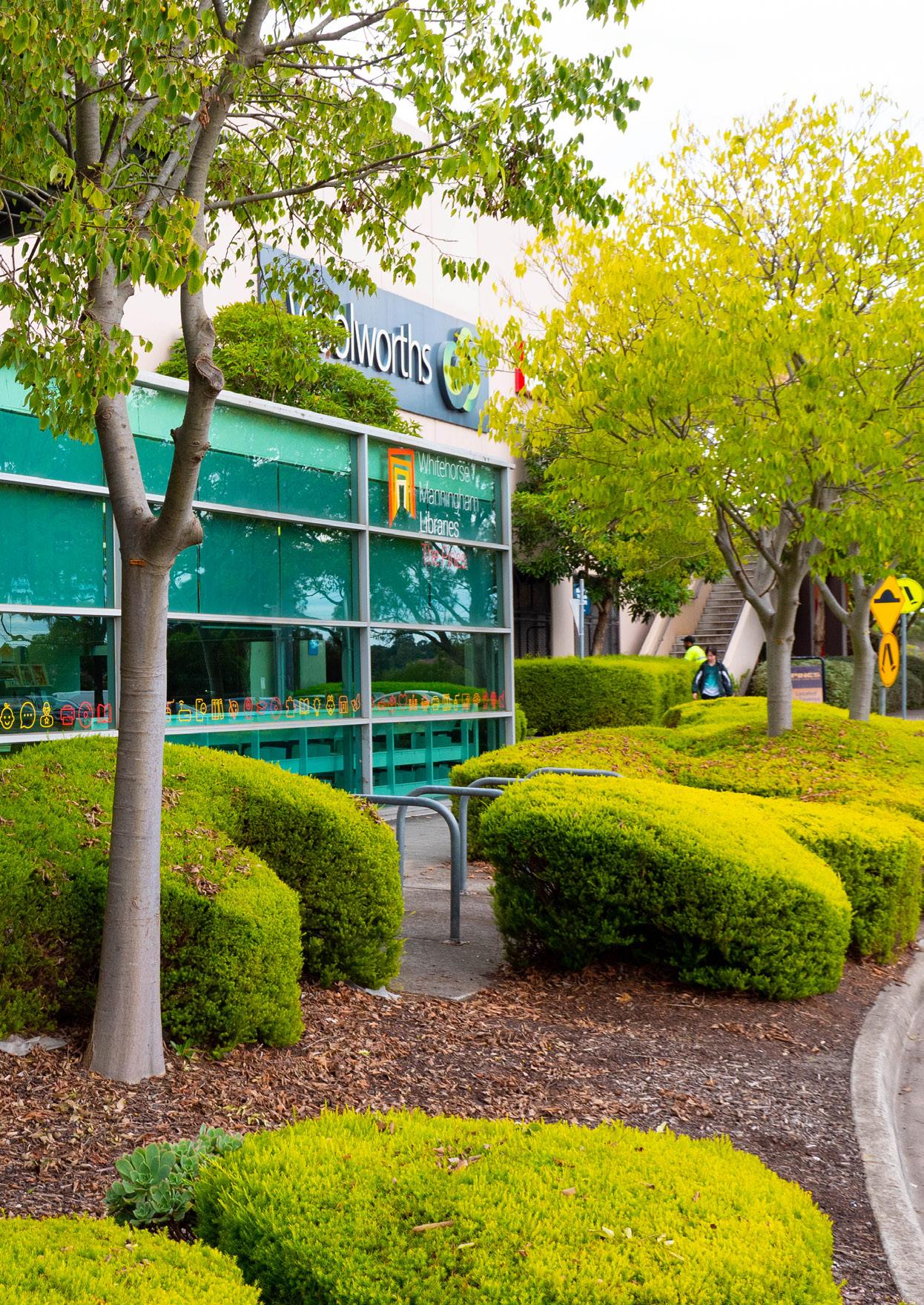
52
The Pines
Built 1987
Current Status
The Pines Library was built in 1987 and is leased by Council from The Pines Shopping Centre until 2032. This is the second busiest library in Manningham. The building is essentially the same as it was when it was opened in 1987. The nearby Pines Learning Activity Centre and the Deep Creek Childcare Centre offer a range of complementary community services and programs.
Children’s programs and collections are very popular at this library. The reference and circulation desk occupies a central and large space and was not designed for RFID technology. There are no quiet study or private meeting spaces and access to public computers is limited due to lack of space. There is no access to power for laptops at study tables. Navigating to the library entrance is hazardous particularly for visitors with young children or those with limited mobility. Back of house areas are cramped and do not meet operational need, lack natural light, private meeting space and there is no undercover delivery dock. Overall the library is cramped and unable to meet the needs of a growing community.
Vision – A new welcoming and inclusive District Library with a focus on life-long learning
The Pines Library and Learning Hub will be a welcoming and accessible space for people of all ages. The library will be an important component of this multipurpose facility, using innovation to deliver maximum value from the site. The modern facilities will meet community’s needs and expectations and foster a love of lifelong learning. It will have a strong connection to place and be a vibrant part of the local community. It will be an environmentally responsible landmark building with a good design aesthetic. There will be a variety of study, reading and meeting spaces, large children’s area for early literacy programs and collections and multi-purpose spaces. The library will be technology rich to support programs across the life cycle, with provision for access outside serviced hours.
Rationale
The Pines Library is very well-used, but undersized for the catchment it serves. It is in a leased facility where opportunities to upgrade and expand are limited. Council is currently undertaking a scoping study to examine options for the development of a new library and community hub in the Pines Precinct. A new larger Library and Learning Hub is an opportunity to increase connections with community groups and services like: The Pines Learning Centre, U3A, early learning centres and Maternal and Child Health Services. The enlarged library will attract new members and increase the capacity of the library to meet user needs.
53
Visitors per year Open weekly Computer and Wi-Fi bookings Program attendances Total floor area 164,563 59 hrs, over 7 days 23,600 8,971 640 m2
Bulleen
Bulleen Library is leased until 2025 by Manningham City Council in a property at the rear of the Bulleen Plaza Shopping Centre. The Library has not had any major refurbishment since it opened and looks and feels like a 40 year-old library. ‘It looks the same as when I came here as a child’, was a recent comment by 50 year old patron. Although the bigger, newer Doncaster Library is only 4.5km away, this library remains well used by locals who value its neighbourhood feel and familiarity.
The library is undersized, with little natural light. Children’s programs at Bulleen are well attended, but the library is crowded and noisy when children’s programs are on. There are ongoing concerns with accessibility into and around the library. The concrete pillars in the library make the space inflexible and impact on the arrangement of the collection and study desks. There are no private study spaces, no public toilet facilities and the back of house areas are extremely poor. The lack of a high profile location, small size and condition of this library impacts on its capacity to attract new and different users.
Vision - A new welcoming and warm Community Library with a focus on community connections and learning

A new boutique library with a neighbourhood focus. Accessibility will be key. A space that is comfortable and welcoming for older people and children. The Library will be co-located with other complementary services. Increased space for study and reading and flexible spaces for programming, including outdoors will be provided to meet community needs. Extended access to the library outside of staff serviced hours will be provided.
Rationale
The Bulleen Library is undersized and well overdue for renewal. Older people, many with Greek and Italian heritage, live in the area and are an important cohort of current library users. The number of pre-schoolers and school age children in the area is growing, and more flexible space and quiet reading and study spaces will be needed.
54
Built 1984
Visitors per year Open weekly Computer and Wi-Fi bookings Program attendances Total floor area 100,034 48 hrs, over 6 days 14,920 7,099 500 m2
Current Status

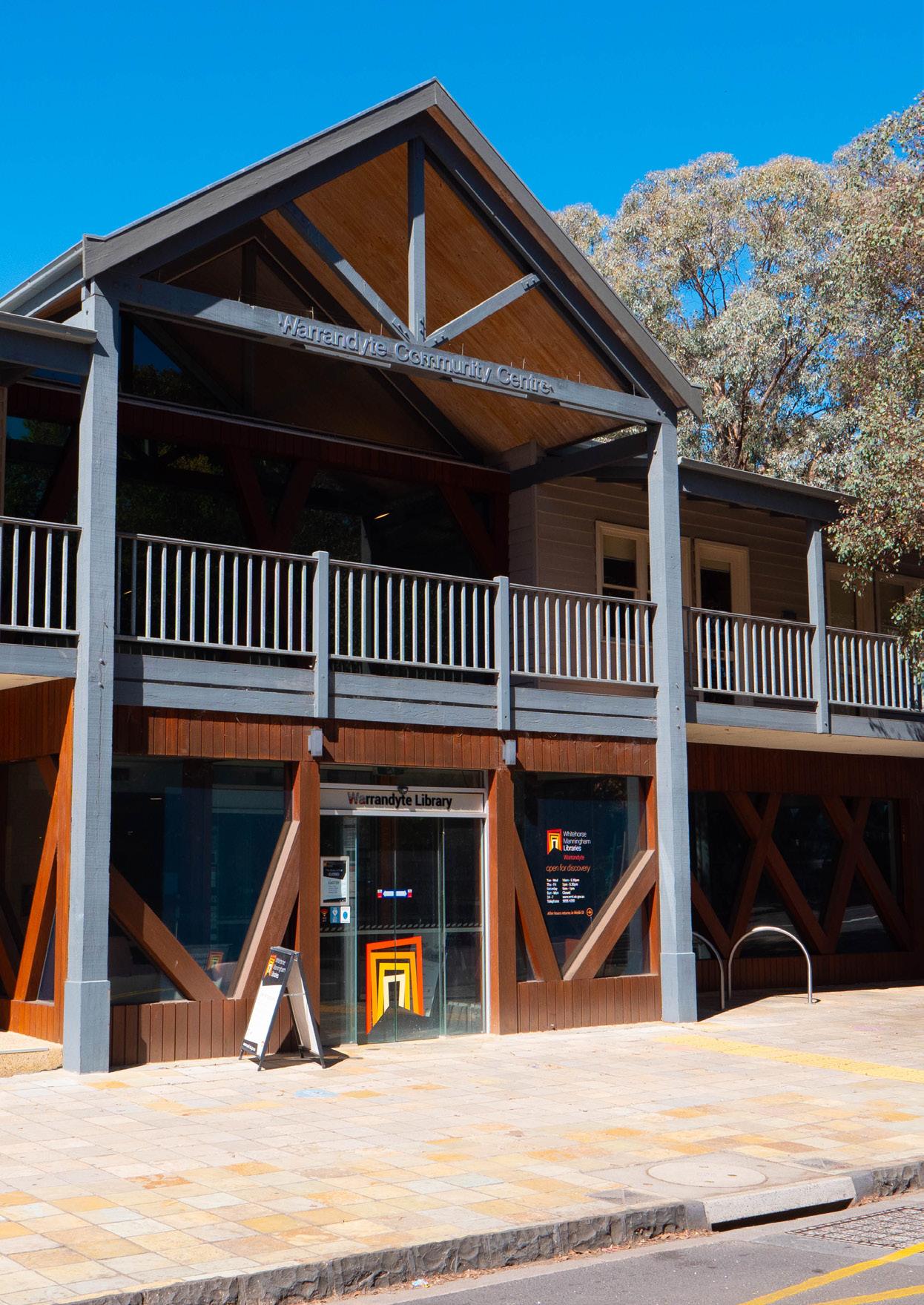
Warrandyte
Built 2013
Visitors per year
Open weekly
Current Status
The Warrandyte Library was established in 2013 as part of a refurbishment of the Warrandyte Community Centre, a Council owned asset. It is co-located with the Warrandyte Neighbourhood House, the Lions Club of Warrandyte Opportunity Shop, Warrandyte Community Association and The Warrandyte Diary. The library is the smallest in Manningham and serves the township of Warrandyte on Melbourne’s urban fringe. It has the lowest number of visitors, but the highest satisfaction levels.
Although quite small, the library feels spacious and light with high amenity. The collection is well presented and tailored to local interests. The space at the rear of the library can be reconfigured for programs and events. External access to the library Wi-Fi extends to the landscaped area at the rear of the Community Centre.
For a small library the service and reference desk is large while the back of house staff area is small and inefficient. The library lacks a quiet/meeting room for private study or
meetings. Extended hours access for approved members will be introduced in 2023 to help overcome the shortcomings of the library’s limited opening hours. Technology and systems to support safe access during nonstaffed hours will be installed.
Vision – A refurbished modern Community Library
The aim is to maintain to a high level this welcoming, modern neighbourhood library. Improve access by introducing new technology that enables library use outside times when the library is staffed. Improve operational efficiency by reviewing and updating back and front of house layout, including updating the service desk. Improve user experiences by providing private study and meeting space.
Rationale
The library serves a relatively small catchment, and low visitation numbers are due in part to limited opening hours. The introduction of the new technology to facilitate extended access is a prudent way to maximise access to this quality community infrastructure. It is nearly 10 years since this library opened and time to review how well the library layout serves its purpose.
57
Computer and Wi-Fi bookings Program attendances Total floor area 31,342 28 hrs, over 5 days 2,617 2,467 293 m2
Improving Whitehorse Manningham Libraries The Approach
This Plan proposes that five out of the eight WML be replaced. Only two libraries out of the eight have been built in the last 30 years (Doncaster in 2012 and Warrandyte in 2013). Nunawading underwent a major refurbishment in 2010 and a limited refurbishment of Box Hill Library was completed in 2018. There has been no significant refurbishment of Blackburn in the last 22 years or any significant refurbishment of Vermont South, The Pines or Bulleen since they opened18
The path to addressing the identified shortcomings in WM library infrastructure includes a number of steps and approaches. The IIP identifies:
� Actions to improve existing facilities in the short term. Additional funding will be required where the scope of the improvement options can’t be accommodated within the WML annual budget.
� Actions to achieve a more strategic and planned approach to the maintenance of library buildings, furniture and equipment to a standard that enhances the user experience; and
� The importance and urgent need for facility planning. From minor refurbishments to new library builds, proper planning supported by appropriately skilled and qualified people is critical. The Plan recognises the long lead time for major capital works projects requiring Council investment.
The priority for replacement of two libraries in each municipality is rated high as the buildings struggle to deliver the desired community outcomes. The IIP recognises that library replacement is a significant investment for the member Councils. It requires well considered planning and stakeholder consultation to ensure the best community outcomes. Existing libraries will have to serve their communities for a minimum of five more years, and likely much longer.
Given the rate of change in technology, community needs and service delivery trends, it is prudent to review the physical layout of library spaces at least every ten years, no matter the age of the building. This places not just the older libraries but the Warrandyte, Nunawading, and Doncaster libraries in the frame for review and renewal within the scope of this Plan.
58
18 A Site and scope study for The Pines Library is currently being undertaken by the City of Manningham. Forecast population by suburb Identified need Priority Box Hill Flagship LibraryLarge Central Replacement High Nunawading District LibraryLarge Replacement Medium Vermont South District LibraryMedium Refurbishment Low Blackburn Community Library - Small Replacement High Doncaster Flagship LibraryLarge Central Refurbishment Medium The Pines District LibraryMedium Replacement High Bulleen Community Library - Medium Replacement High Warrandyte Community Library - Small Refurbishment Low
Summary of Library Improvement Projects
The following table provides a summary of the actions to be undertaken, by agency, to progress the proposed improvement projects.
Timelines for the actions are also proposed and help identify priorities.
59
Location Activity Responsibility Timeframe 2022 –2032 Short Term 0-3yrs Med. Term 3-5yrs Long Term 5-10yrs Service-wide Undertake an Accessibility Audit of all library buildings WML ꞏ Service-wide Develop layout and minor refurbishment options for individual libraries WML ꞏ Service-wide Develop furniture replacement plan WML ꞏ Service-wide Undertake audit of wayfinding signage at all library buildings WML ꞏ Service-wide Establish annual meetings with Councils to plan building maintenance WML + Councils ꞏ ꞏ ꞏ Mannigham Doncaster Plan and implement refurbishment WML + Manningham ꞏ The Pines Plan and construct new library WML + Manningham ꞏ ꞏ Bulleen Plan and implement minor refurbishment to existing facility WML + Manningham ꞏ Bulleen Plan and construct new library WML + Manningham ꞏ ꞏ ꞏ Warrandyte Plan and implement minor refurbishment WML + Manningham ꞏ Additional Service Points Explore alternative or micro service points in other community facilities WML + Manningham ꞏ Whitehorse Box Hill Plan and construct new library WML + Whitehorse ꞏ ꞏ Nunawading Plan and construct new library WML + Whitehorse ꞏ ꞏ Vermont South Plan and implement refurbishment WML + Whitehorse ꞏ Blackburn Plan and implement improvements to existing facility WML + Whitehorse ꞏ Blackburn Explore future service model options WML + Whitehorse ꞏ ꞏ Additional Service Points Explore alternative or micro service points in other community facilities WML + Whitehorse ꞏ ꞏ
Conclusion
Whitehorse Manningham Libraries are popular and well used by a variety of people across all life stages. For many who live, work and study in Whitehorse and Manningham, libraries are an integral and highly valued part of their life and their community.

The WML 2021- 2025 Library Plan identified the need to prepare an Infrastructure Improvement Plan to determine the nature and priority of infrastructure renewal works to support the delivery of a contemporary library service. A report prepared in 2021 by I and J Management established that:
� for the growing and changing population in Whitehorse and Manningham the WML were around 50% undersized, and
� with only two of the eight libraries built in the last 30 years most libraries were dated and struggled to meet a number of library user needs.
The WML Infrastructure Improvement Plan is an evidence based guide for the development and renewal of libraries in Whitehorse and Manningham. It provides insight into how library infrastructure impacts on services and user experiences, and guidelines for the development of contemporary library spaces. It describes an approach and the steps to a program of building improvements and development over the next decade based on the condition of libraries and community demand.
The IIP makes the case for upgrading library buildings to ensure they are modern, welcoming, accessible and safe. Libraries that are old, small and in poor condition hinder the delivery of responsive library services. The success of the IIP relies on a commitment by WML and the member Councils to work in partnership to provide better libraries that people in Whitehorse and Manningham need and deserve.
60
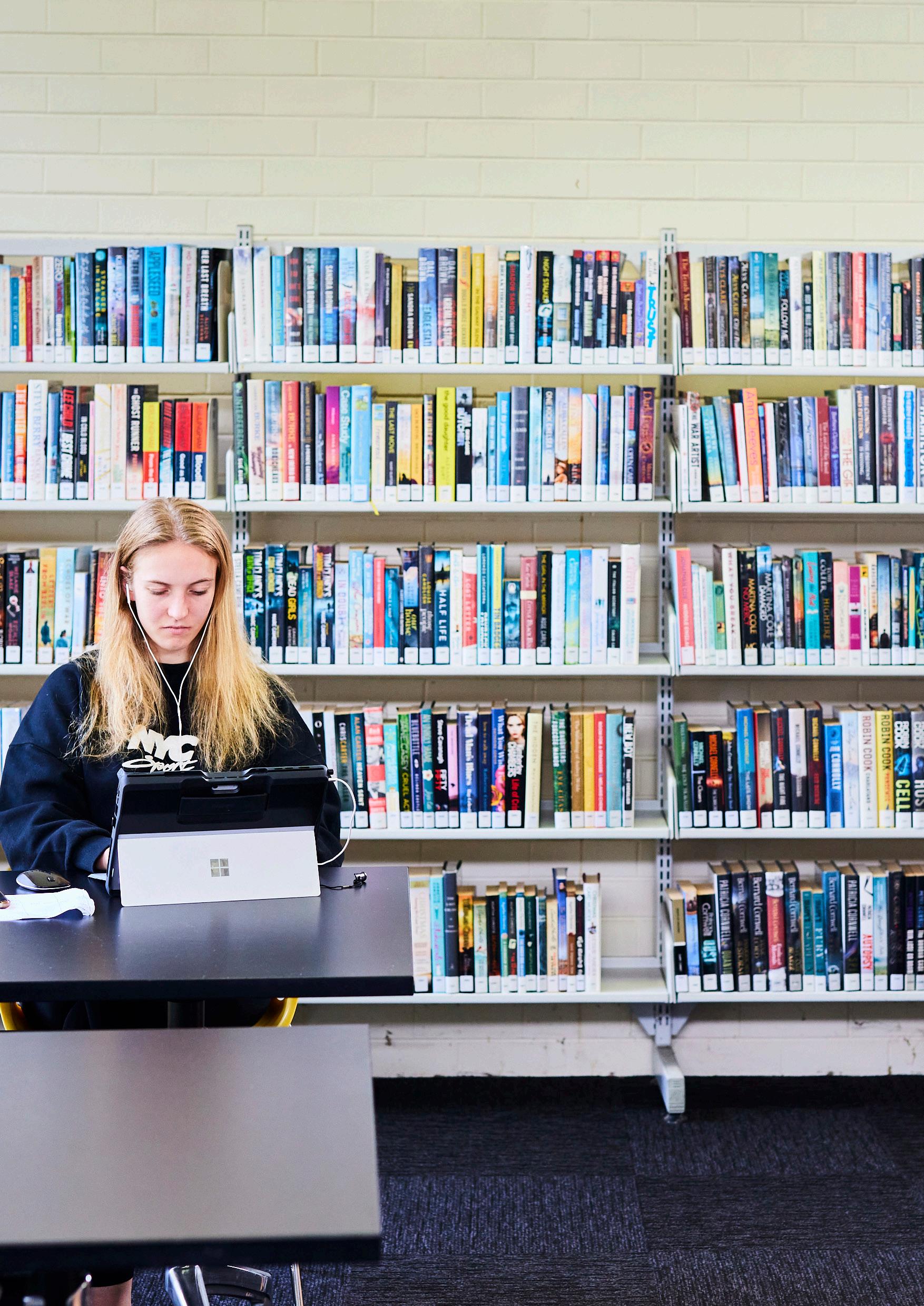
PART 5
SIX EXEMPLARY MODERN LIBRARIES

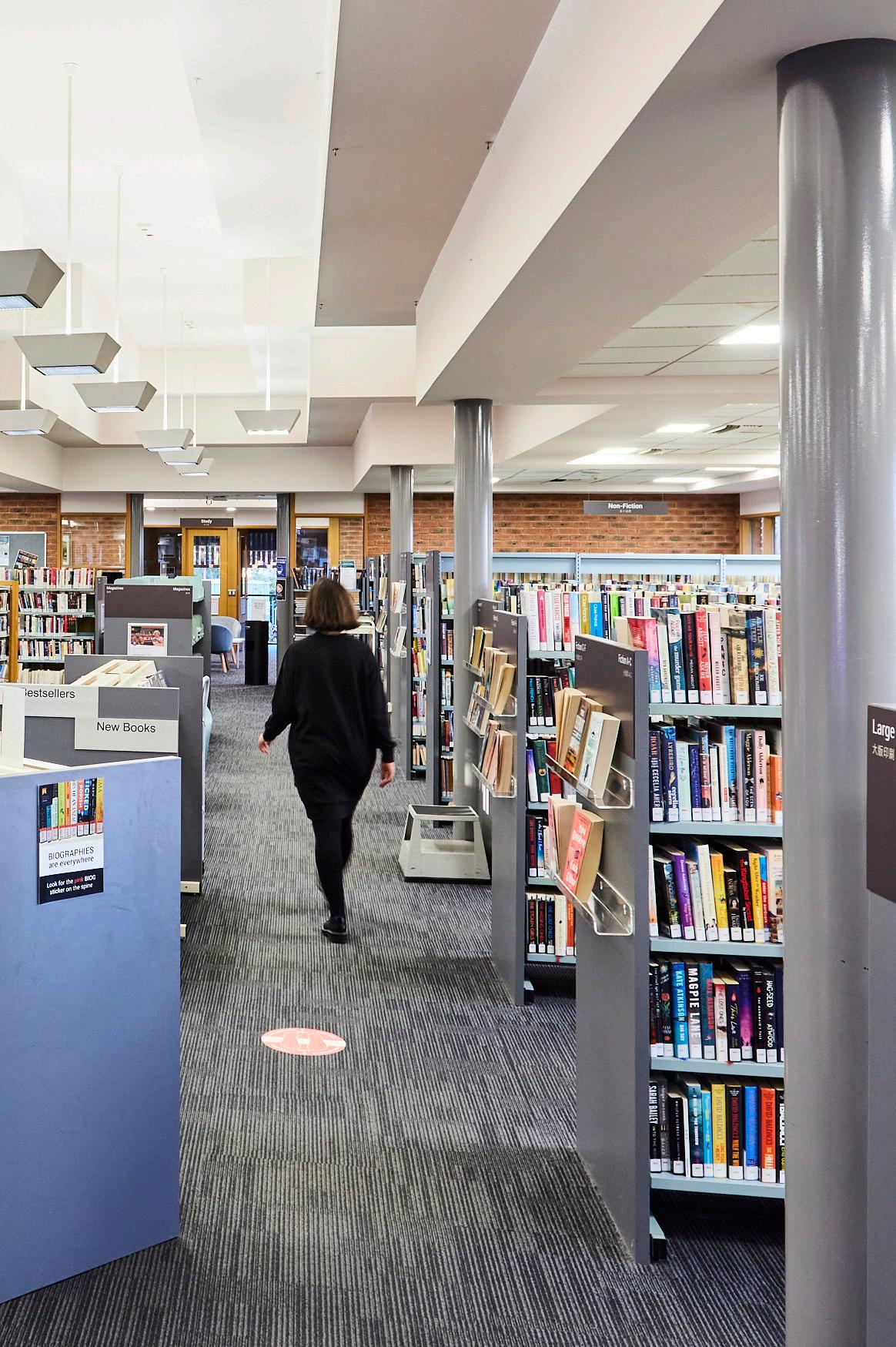
63
GEELONG LIBRARY

AND HERITAGE CENTRE. City of Greater Geelong
THE BRIMBANK COMMUNITY AND CIVIC CENTRE. Brimbank City Council
The Geelong Library and Heritage Centre was completed in 2015 and forms part of the City of Greater Geelong Civic and Cultural Precinct. Located on the edge of the historic Johnson Park the Library is next to the Geelong Regional Art Gallery and across the road from the Geelong Performing Arts Centre.
The building design references the domes of the great libraries of the world. It is a destination Library with a striking presence in the centre of the City. It has been described as “... an iconic addition to Geelong’s architectural and cultural landscape”. The GLHC was a signature investment by Council in Geelong’s Digital Strategy. It was promoted as a platform to build digital capacity and a visible symbol of the city’s transition from manufacturing and heavy industries to new industry sectors with a focus on technology, services and innovation.
The GLHC covers over 6,000 sqm with eight levels on the same footprint of the previous two story library. It includes an exploration and discovery zone for children and young people, a heritage centre and repository, an events space on level 5, meeting rooms work and study spaces, a café and arts exhibition space on the ground floor. It has an administration floor that houses the Regional Library Corporation.
The Brimbank Community and Civic Centre was opened in 2016 and is the centrepiece of a revitalisation of the main street in Sunshine. The development by Brimbank City Council had a broad objective to make Sunshine the centre of Melbourne’s west.

The design draws on the saw tooth roof line of industrial buildings in the area. It has a particular focus on the streetscape to establish a welcoming entry to the ground floor Library and Council’s customer service point. It has a sense of civic monumentality which is combined with generous, well-appointed spaces for social and cultural uses.
The six level building houses the Brimbank City Council offices, with the Sunshine Library on the first two floors. The second floor also includes a learning centre and community rooms, the Council chamber, and an exhibition space. There is a generous double height reading room and a number of flexible quiet study and work spaces throughout the library. The library is zoned for different users and includes a children’s area, toy library, gaming area and Wi-Fi lounge. A customer service centre and a local history centre make up the footprint of the building’s ground floor. The building has a 5 Star Green Star rating with sustainability at the core of the design.
64
Photo GRLC Website
Photo by Sue Howard
BARGOONGA NGANJIN –NORTH FITZROY LIBRARY. City of Yarra.
IVANHOE LIBRARY AND CULTURAL HUB. Banyule City Council
Bargoonga Nganjin, means ‘Gather Everybody’ in Woiwurrung, the language of the Wurundjeri people. Bargoonga Nganjin was completed in 2018. It is a three story, 2,040sqm community hub with the library, set over two levels.
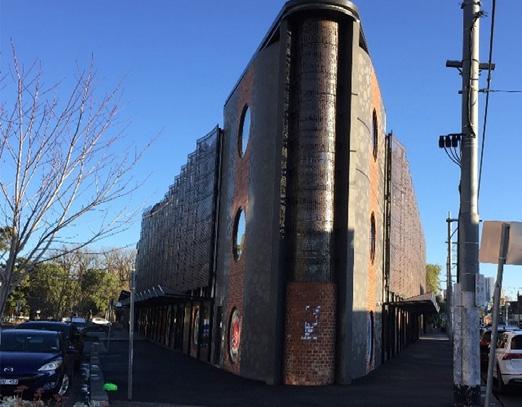
The library occupies the majority of the building’s wedge-shaped floor area and offers a range of programs and services to stimulate lifelong learning and creativity for adults, young people and children alike.
This community facility has a focus on young families and children, offering maternal child health and playgroup services, a range of supports for local families including child health and development, first time parent groups, feeding rooms, facilitated playgroups, community playgroups, parent information sessions and first aid sessions.
There are also community meeting rooms and activity spaces for hire. Council has a customer service counter on the ground floor.
A feature of the library is its extensive rooftop garden for library and community users with cascading planters and informal seating. The building has a number of sustainability innovations with a 6 Star Green Star rating.
The Ivanhoe Library and Cultural Hub was completed in 2021 on the site of the old Ivanhoe Library. The project sought to revitalise the precinct with a modern structure linked sensitively to the heritage listed and iconic artdeco Ivanhoe Town Hall.

The Hub includes the library, a gallery, artist studio and workshop, makers space, IT lounge, community lounge, meeting rooms, an auditorium, customer service, maternal and child health and a café.
An important vision for the Hub is an integrated facility, where different programs and uses overlap and support each other. The library is integrated with artists’ studios and exhibition spaces adjoin the collections, maker spaces, study and casual seating areas. One of the project’s key objectives was to work as a “cultural connector”; an inclusive cultural asset that welcomed and supported residents while telling a story of the local area and its history and identity.
There are different zones for different uses, from quiet to participatory spaces, which support after hours activities. An outdoor landscaped area invites casual connections and provides a seating area for an informal indoor/ outdoor theatrette.
65
Photo by Sue Howard
Photo by Dianna Snape
GLENROY COMMUNITY HUB Merri-bek City Council
DARLING SQUARE LIBRARY City of Sydney
The Glenroy Community Hub was opened in 2022. The Hub is located in a diverse multicultural community in Melbourne’s north west. It is a welcoming, nature-inspired environment project by Merri-Bek City Council.
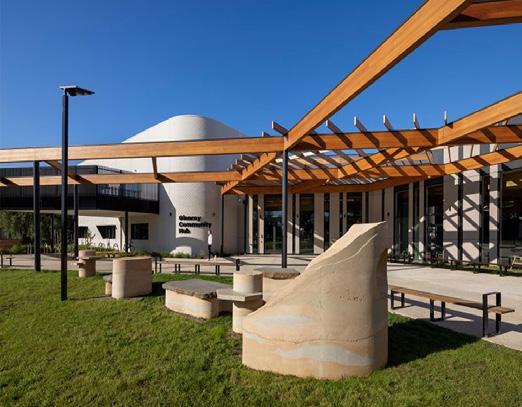
The Hub is home to the Glenroy Library, the Glenroy Memorial Kindergarten, Maternal child health service, Council Customer Service centre, a community health provider and Neighbourhood learning and childcare services.
The Hub demonstrates Merri-Bek City Council’s commitment to sustainable design and is the first public building in Australia to be Passive House-certified. It is also part of The Living Building Challenge, which challenges building projects to create a positive impact on their site, while operating beautifully and efficiently.
Living Buildings are regenerative buildings that connect occupants to light, air, food, nature, and community; are self-sufficient and remain within the resource limits of their site and create a positive impact on the human and natural systems that interact with them.
The Darling Square Library was opened in 2019 in a six story building called “The Exchange”. The Exchange is in Darling Square, a new neighbourhood that connects Darling Harbour, Chinatown, Haymarket and Ultimo and is part of the NSW Government’s 20-hectare revitalisation of the area.
The spiral-like building is wrapped in 20km of sustainably sourced timber ribbons, which offer passers-by glimpses of what’s inside and filter natural light into the building. The wooden screen wrapping the building is “a historical reference to Darling Harbour originally being a hive of business activity and a focal point as a market exchange.” Kengo Kuma, building architect.
The Exchange is home to not only the Darling Square Library but also a childcare centre, a market hall called Maker’s Dozen and an Ideas Lab - a co-working space where people can innovate, learn new skills or set up a new enterprise. It also has a restaurant on the mezzanine and a rooftop bar that offer views over the Chinese Gardens, Tumbalong Park and Cockle Bay.

66
Photo from Merri-bek Council website
Photo from the City of Sydney Website


References
1. 2021-2025 Whitehorse Manningham Libraries Plan
2. Whitehorse Manningham Libraries 2021 Library User Survey
3. Whitehorse Manningham Libraries Annual and Quarterly Activity Statistics
4. Cities of Whitehorse and Manningham Library Strategy. Part B. Library Infrastructure. I and J Management Services. (2021)
5. Whitehorse Council Plan 2021-2025 and the Whitehorse Health and Wellbeing Plan 20212025.
6. Whitehorse Asset Plan 2022–2032. (2022)
7. Box Hill Metropolitan Activity Centre to 2036 DRAFT Structure Plan. Prepared by MGS Architects for Whitehorse City Council. (2021)
8. Manningham Council Plan 2021-2025 and Manningham’s Health and Wellbeing Strategy 2021-2025.
9. Standards and Guidelines for Australian Public Libraries. Australian Public Library Alliance and Australian Library and Information Association. (2021)
10. Libraries Work! The Socio-Economic Value of Public Libraries to Victorians. State Library of Victoria. (2018)
11. The Future Public Libraries Survey, Summary Report. I and J Management for the State Library of Victoria with Public Libraries Victoria. (2021)
12. IFLA – UNESCO Public Library Manifesto 2022. International Federation of Library Associations and Institutions and UNESCO. (2022)
13. Planning Victoria website for land use and population research.
14. Community Profiles for the Cities of Whitehorse and Manningham, profile.id, https:// profile.id.com.au/whitehorse and https://profile. id.com.au/manningham.
15. Libraries for Health and Wellbeing. A strategic framework for Victorian public libraries towards 2024. State Library of Victoria and Public Libraries Victoria. (2021)
16. People Places; A Guide for Planning Public Library Buildings. State Library of New South Wales. (2022).
17. Whole of Victorian Government Universal Design Policy. Department of Families, Fairness and Housing, State Government of Victoria, Australia. (2021)
69
Appendix 1 Library Activity Statistics

Whitehorse 2018/19 Activity By Library Location
Box Hill Nunawading Vermont South Blackburn 268,684 235,395 118,029 61,077 0 50,000 100,000 150,000 200,000 250,000 300,000 Visitation 902 1,967 1,029 902 14,542 12,874 10,755 3,144 - 5,000 10,000 15,000 20,000 Box Hill Nunawading Vermont South Blackburn Program Attendances Children & Youth Adult Box Hill Nunawading Vermont South Blackburn 0 10,000 20,000 30,000 40,000 50,000 60,000 70,000 80,000 Physical Collection Size 70,409 74,970 43,212 24,625 137,227 195,363 122,370 41,263 Loans of Children's books Box Hill Nunawading Vermont South Blackburn Box Hill Nunawading Vermont South Blackburn 0 50,000 100,000 150,000 200,000 250,000 300,000 350,000 Loans of Physical Items 242,125 182,935 70,793 321,290 72,434 14,123 8,728 Public Computer Use Box Hill Nunawading Vermont South Blackburn 52,172 71
Whitehorse Library Community Survey 2021
Librar y visitation frequency
Once per year
2 to 3 times per year
Once every 2 to 3 months
Once a month
2 or 3 times a month
Once a week
More than once per week
Reason to visit the librar y
For childrens or youth activites
For a place to study or work
For a place to read
For author talks or adult programs
To use computer, Wi-Fi or equipment
To get help from library staff
To find information
To borrow physical collections
0% 5% 10% 15% 20% 25% 30% 35%
Box
Vermont South
0% 20% 40% 60% 80% 100%
Hill Nunawading
Blackburn
Box Hill Nunawading Vermont South Blackburn
72
Manningham - 2018/19 Activity By Library Location
353,666 164,563 100,034 31,34250,000 100,000 150,000 200,000 250,000 300,000 350,000 400,000 Visitation Doncaster The Pines Bulleen Warrandyte 2,412 611 764 798 13,854 7,004 6,335 1,669 - 5,000 10,000 15,000 Doncaster The Pines Bulleen Warrandyte Program Attendance Children & Youth Adult10,000 20,000 30,000 40,000 50,000 60,000 70,000 80,000 Physical Collection Size Doncaster The Pines Bulleen Warrandyte 68,220 43,221 26,387 10,139 180,679 113,074 41,263 11,573 Loans of Children's Collections Doncaster The Pines Bulleen Warrandyte 370,124 254,750 133,401 28,349 0 50,000 100,000 150,000 200,000 250,000 300,000 350,000 400,000 Loans of Physical Collections Doncaster The Pines Bulleen Warrandyte 62,943 23,600 14,920 2,617 Public Compuer Use
Warrandyte
Doncaster The Pines Bulleen
73
Manningham Library Community Survey 2021
Librar
y visitation frequency
Once per year
2 to 3 times per year
Once every 2 to 3 months
Once a month
2 or 3 times a month
Once a week
More than once per week
Reason to visit the librar y
For childrens or youth activites
For a place to study or work
For a place to read
For author talks or adult programs
To use computer, Wi-Fi or equipment
To get help from library staff
To find information
To borrow physical collections
0% 5% 10% 15% 20% 25% 30% 35% 40%
Doncaster The Pines Bulleen Warrandyte
0% 20% 40% 60% 80% 100%
Doncaster The Pines Bulleen Warrandyte
74
Pandemic Recovery WML YTD Activity Trends as at 30/09/2022
0 100000 200000 300000 400000 18/19 YTD 19/20 YTD 20/21 YTD 21/22 YTD 22/23 YTD Library Visitation Whitehorse Manningham Total 0 200000 400000 600000 800000 18/19 YTD 19/20 YTD 20/21 YTD 21/22 YTD 22/23 YTD Collection Loans Physical e-books Total 0 1000 2000 3000 4000 5000 18/19 YTD 19/20 YTD 20/21 YTD 21/22 YTD 22/23 YTD
Members Whitehorse Manningham Outreach Total
New
75
Victorian Public Library Indicators 2018 - 2019
* Ranking out of 47 Victorian public libraries All indicators are ranked from the highest value to the lowest value

76 Indicator WML 2018 - 19 Ranking* Difference to Victorian average 1 Active library members (as a % of population ) LGPRF definition 14% 27 -2% compared to Victorian average of 16% 2 Attendance at library programs per ‘000 270 34 23% below the Victorian average of 350. 3 Turnover rate - physical items 7.3 6 +1.9 loans per item compared to Victorian average of 5.4 4 Loans (physical items) per capita 8.9 2 +2.5 loans per capita above the state average of 6.4 5 Loans (physical items) per active member 62 1 50% above the state average of 41 loans per year 6 Library visits per capita 4.4 25 0.3 below the state average 7 Library visits per opening hour per week 67 6 37% above the Victorian average of 49 8 Computer bookings per capita 0.83 4 58% above the state average of 0.53 9 Public access computers per ‘000 population 0.4 35 35% below the Victorian average of 0.62

WHITEHORSE LIBRARIES
BOX HILL 1040 Whitehorse Road, Box Hill 3128 9896 4300 box@wml.vic.gov.au
NUNAWADING 379 Whitehorse Road, Nunawading 3131 9872 8600 nun@wml.vic.gov.au
VERMONT SOUTH Pavey Place, Vermont South 3133 9872 8650 ver@wml.vic.gov.au
BLACKBURN Cnr Blackburn & Central Roads, Blackburn 3130 9896 8400 bla@wml.vic.gov.au
ADMINISTRATION
1040 Whitehorse Road Box Hill 3128 PO Box 3083 Nunawading BC 3131
PH: (03) 9896 4321 WEB: wml.vic.gov.au
MANNINGHAM LIBRARIES
DONCASTER MC Square 687 Doncaster Road, Doncaster 3108 9877 8500 don@wml.vic.gov.au
THE PINES Cnr Reynolds & Blackburn Roads, Doncaster East 3109 9877 8550 pin@wml.vic.gov.au
BULLEEN Bulleen Plaza Manningham Road, Bulleen 3105 9896 8450 bul@wml.vic.gov.au
WARRANDYTE The Warrandyte Community Centre 168 Yarra Street, Warrandyte 3113 9895 4250 war@wml.vic.gov.au
















































